The U8000F is a very basic television that may find its buyers among those looking for the cheapest Samsung 4K with Smart TV. And that is exactly its purpose. Thanks to the Tizen system, this model really offers quite a lot in terms of smart features – the number of applications and possibilities may attract those who want a reasonably intelligent device at the lowest possible price. In terms of picture quality – it is average, which is not surprising in this class. Nevertheless, a few pluses can be found: fairly good viewing angles will work well for traditional TV watching from different parts of the room, and the basic features for gamers (like VRR and ALLM) may be sufficient for typical "Sunday" gamers. The PC mode also deserves a plus – the television handles displaying fonts very well, so it can also serve as a cheap monitor. Of course, this is not a model that can be recommended to everyone "sight unseen." But if someone is looking for an affordable Samsung with a 4K resolution and a solid Smart system, then the U8000F is just that kind of device.
- Matching (Score)
- Our verdict
- TV appearance
- Where to buy
- Contrast and black detail
- HDR effect quality
- Factory color reproduction
- Color reproduction after calibration
- Smoothness of tonal transitions
- Image scaling and smoothness of tonal transitions
- Blur and motion smoothness
- Console compatibility and gaming features
- Input lag
- Compatibility with PC
- Viewing angles
- Daytime performance
- Panel details
- TV features
- Apps
- Playing files from USB
- Sound
Samsung U8000F (IPS) vs Haier Q80FUX
Direct comparison
Check the best price offer:
Samsung U8000F (IPS)U8000F / U8092F
Available screen sizes: 55”


Panel type: LCD IPS
Resolution: 3840x2160
System: Tizen
Model year: 2025
Complete the survey to find out the result

Panel type: LCD VA
Resolution: 3840x2160
System: Google TV
Model year: 2025
Complete the survey to find out the result

Overall rating
5.3
5.8
Movies and series in UHD quality
4.9
5.9
Classic TV, YouTube
4.8
5.6
Sports broadcasts (TV and apps)
5.2
4.7
Gaming on console
6.1
6.7
TV as a computer monitor
6.0
6.0
Watching in bright light
3.4
4.8
Utility functions
5.3
5.6
Apps
8.7
9.6
Sound quality
5.7
5.5
Complete the survey to find out what fits your preferences
Advantages
Advanced Smart system: Tizen
Good viewing angles (IPS Matrix)
Great for text work - displays fonts excellently
Low input lag
Basic features for gamers - VRR and ALLM
Very good native contrast and decent black (thanks to the VA panel)
PFS / QLED Filter - Wide color gamut (about 95% DCI-P3)
Remarkably low input lag (below 10 ms at 120Hz and about 12 ms at 60Hz), making it a great choice for fast-paced games.
Support for 120Hz at lower resolution (Full HD) and the presence of VRR and ALLM
Support for Dolby Vision
Well-functioning file player from USB
Presence of analog headphone output (jack)
Disadvantages
Low brightness
Very poor black and contrast (IPS panel)
Worse appearance than its predecessor
Infrared remote
The image is quite "blown out" in HDR
Google TV software full of bugs, poor translations, and issues
Missing any image enhancement features (noise reduction, gradient smoothing)
Average brightness
Flat, bassless sound
High input lag in Dolby Vision mode for gaming
Weird and poorly ergonomic remote
Our verdict
The Haier Q80FUX TV is one of the most schizophrenic proposals we've had in our editorial office for a long time. On one hand, we have a solid piece of equipment: a VA panel that guarantees deep blacks, as expected in this segment, and a QLED quantum filter that can indeed generate juicy, eye-catching colors. This is the foundation on which a truly competitive mid-range receiver could have been built. Unfortunately, all this potential of the panel is systematically torpedoed by the software, which is a real ball and chain for this model. The biggest Achilles' heel of the Q80FUX is its total capitulation in the face of HDR10 content. The electronics seem to completely misunderstand how to interpret the signal, resulting in consistently blowing out the brightest parts of the image, turning them into a flat, milky blob. If we add the Google TV system, which – although functional – is unstable, full of errors, and irritating shortcomings, we get a picture of a raw product that clearly reveals the manufacturer's lack of experience. And just when we were ready to write this model off, we discovered its surprising niche. Once connected to a console, the Q80FUX undergoes a transformation. It turns out that this TV offers wonderfully low input lag, fully supports VRR, and can accept a 120Hz signal at Full HD resolution. In the gaming world, where responsiveness is everything, these parameters put it in a very good light. So we are dealing with a device of very narrow specialization. This is not a universal living room TV – it lacks stability and, above all, any correctness in handling films. It is more of a budget, large-format monitor for gamers who are able to consciously overlook all its software flaws in exchange for those few key attributes essential for console/PC at a relatively affordable price.
TV appearance

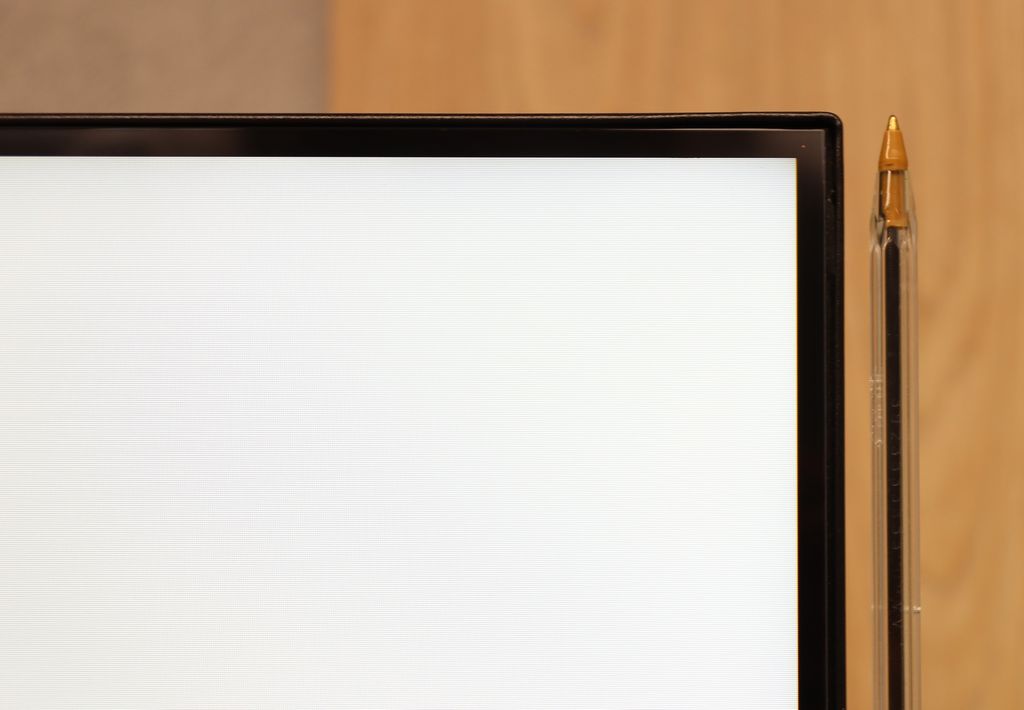
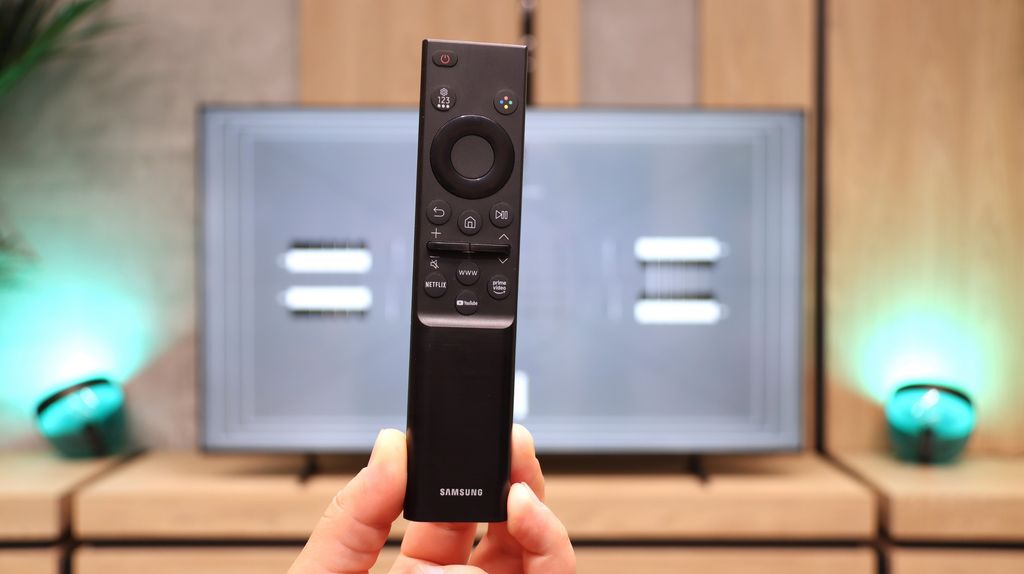
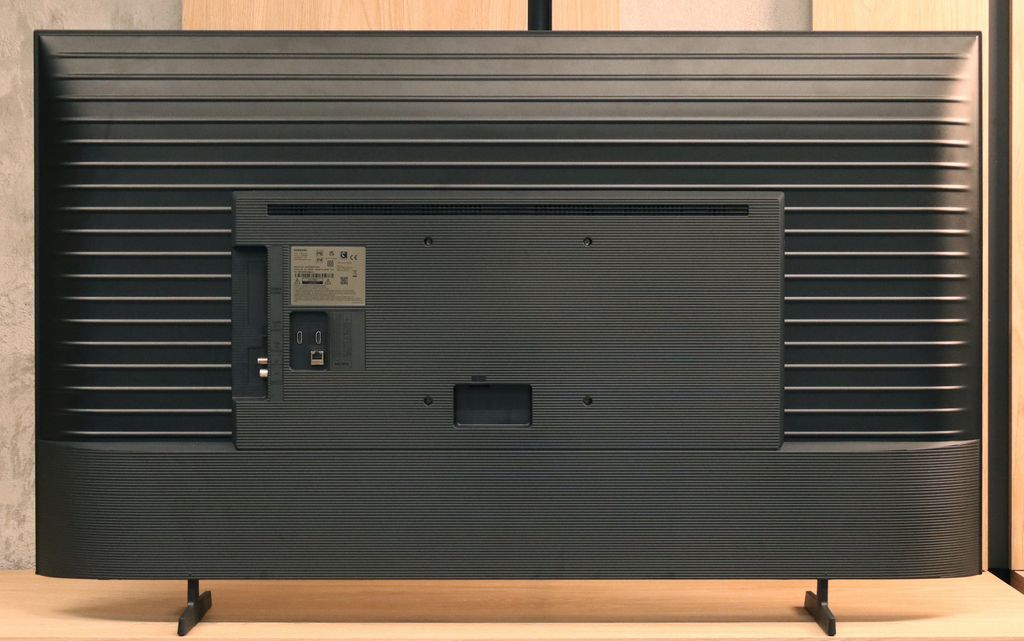
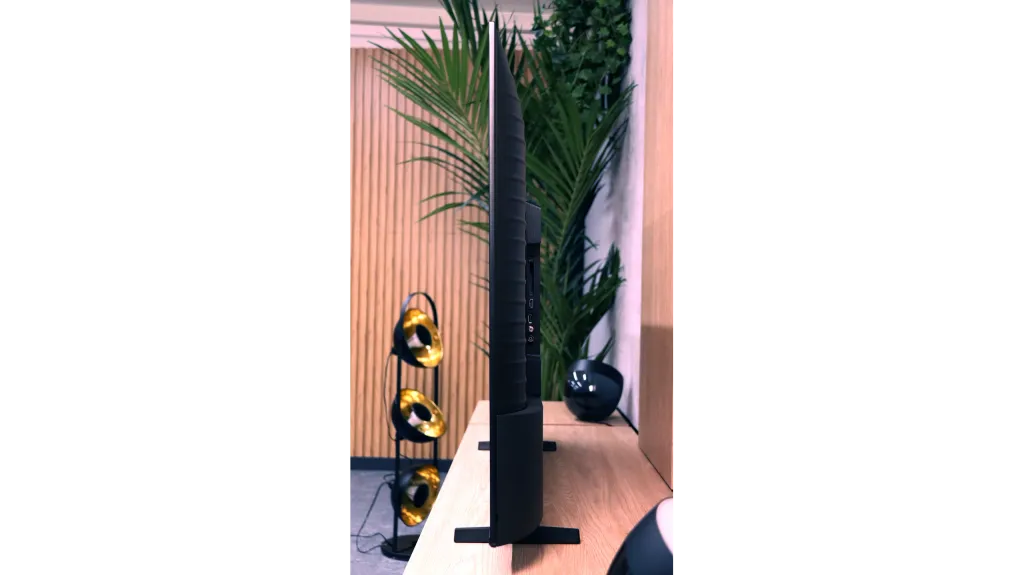
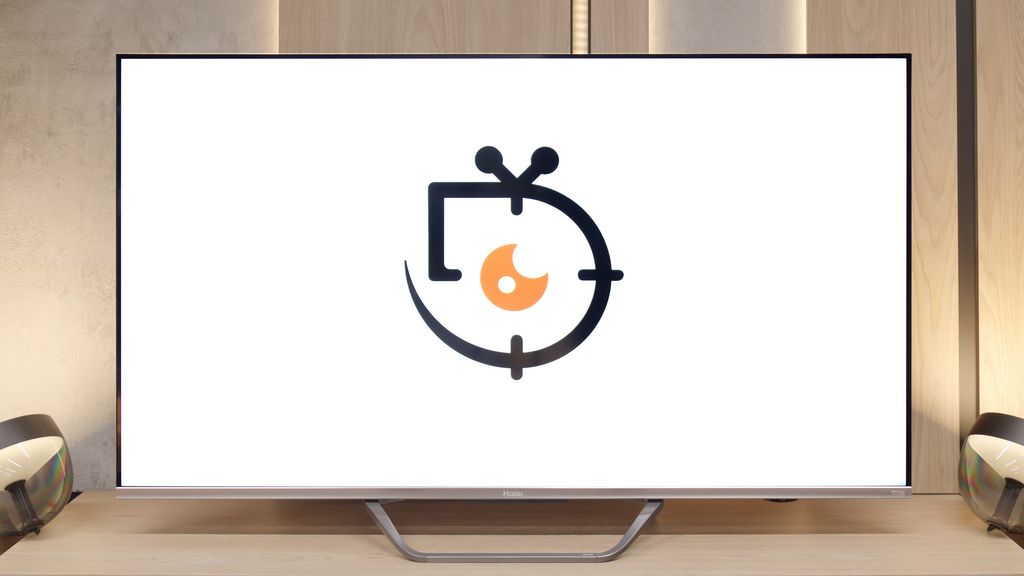
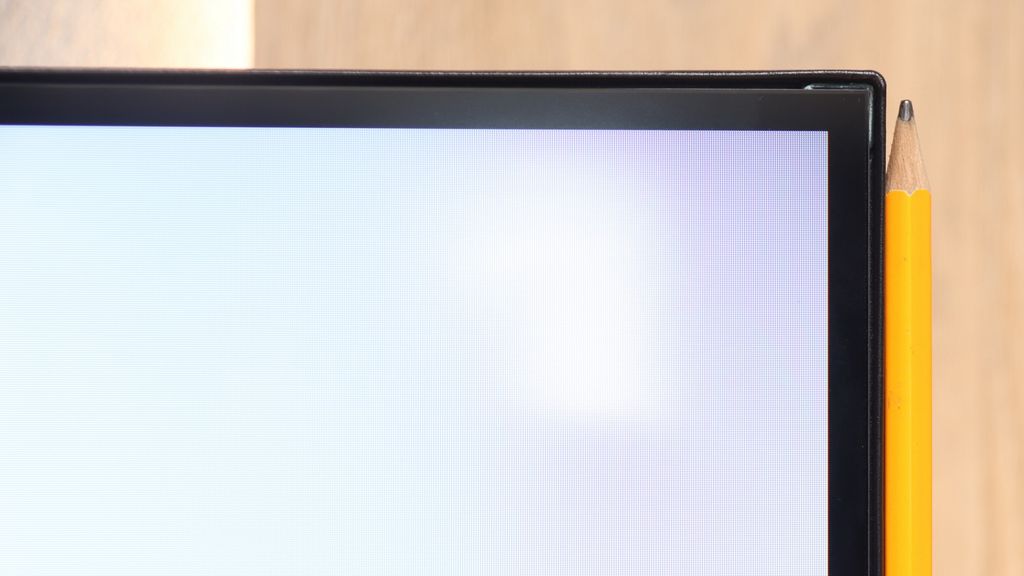
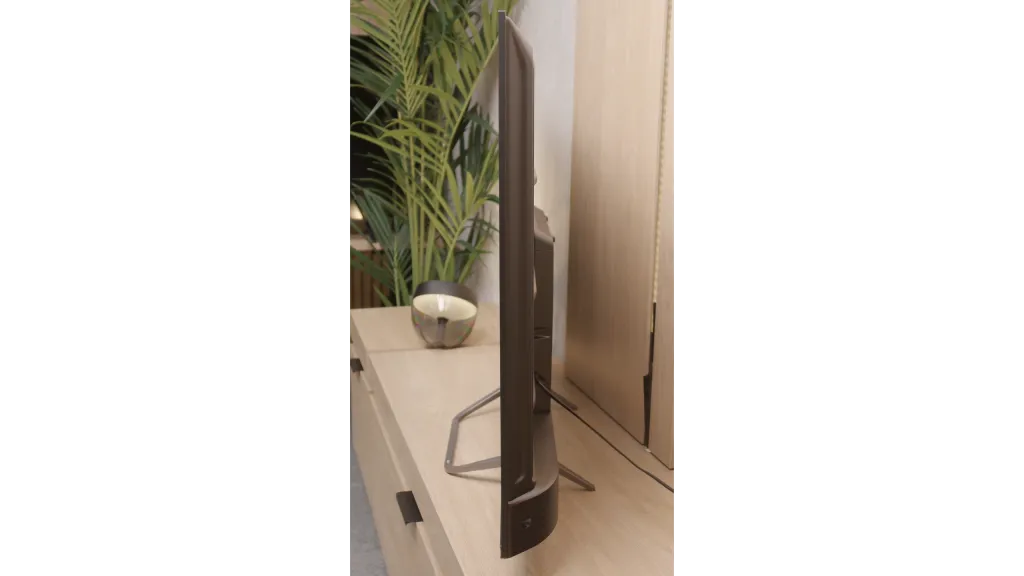
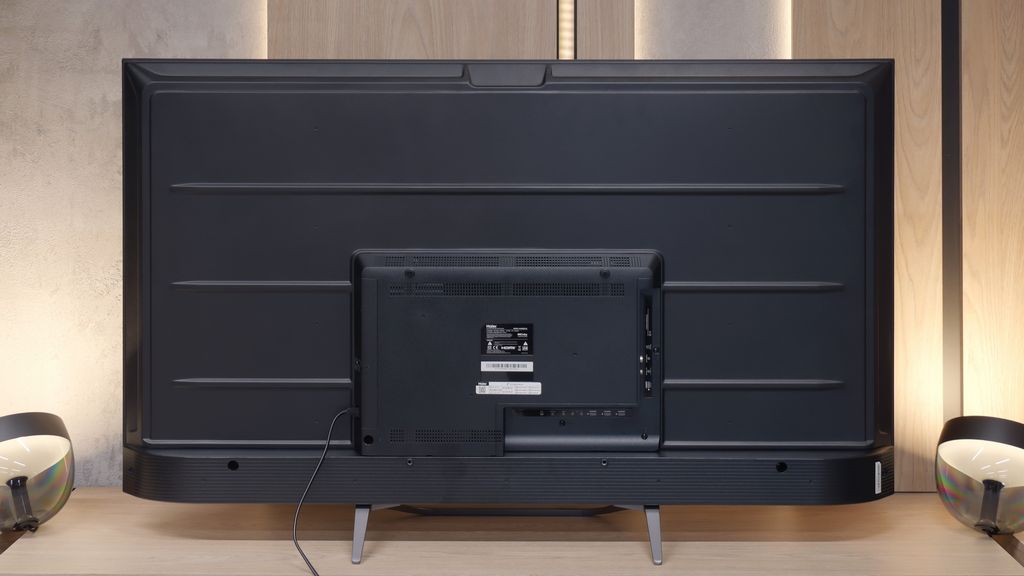
Contrast and black detail
1.1/10
6.3/10
Local dimming function: No
Local dimming function: No
Contrast:

Result
900:1

Result
800:1

Result
700:1

Result
700:1

Result
650:1

Result
5,200:1

Result
7,400:1

Result
7,550:1

Result
7,300:1

Result
6,450:1
Halo effect and black detail visibility:
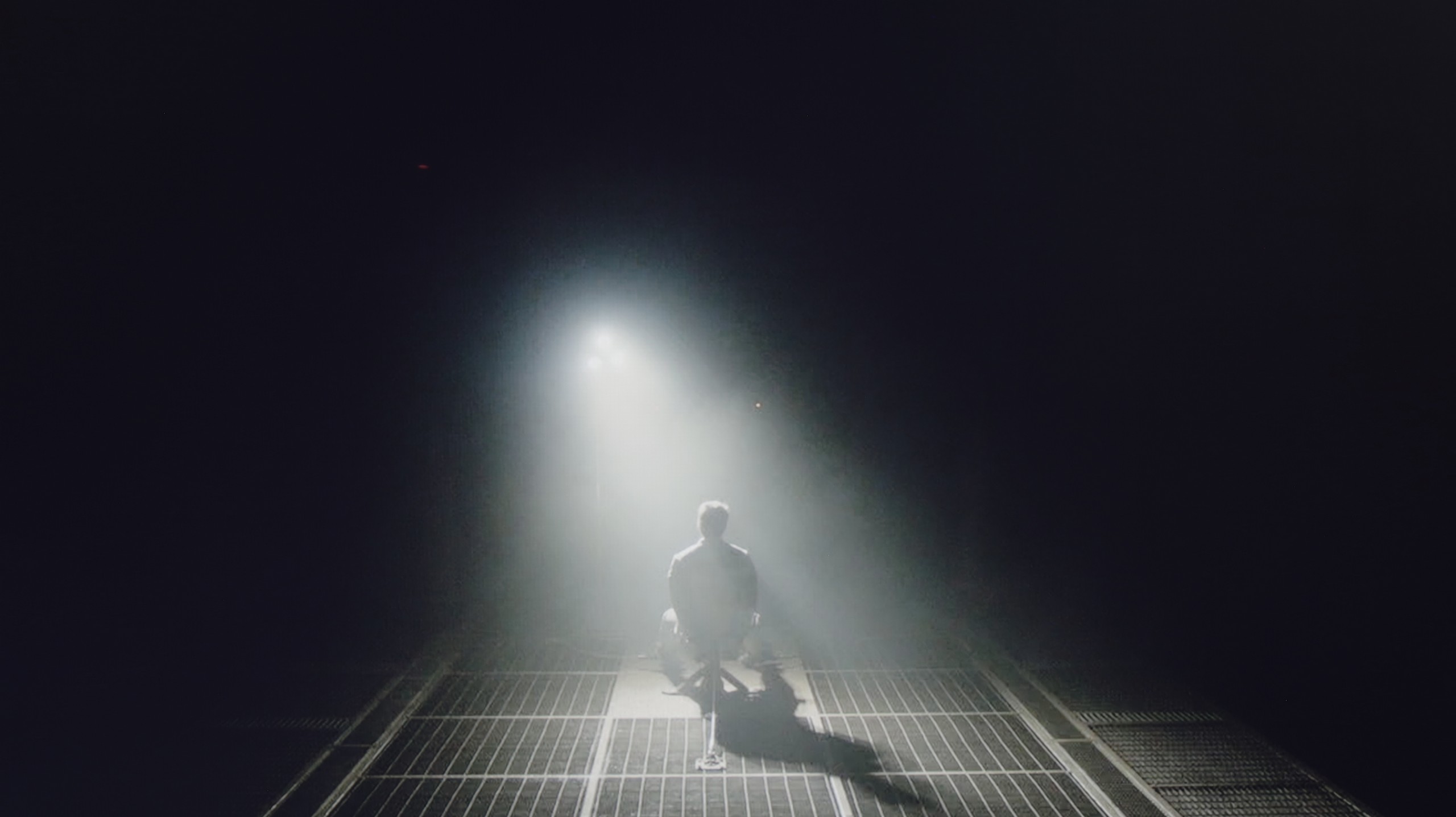
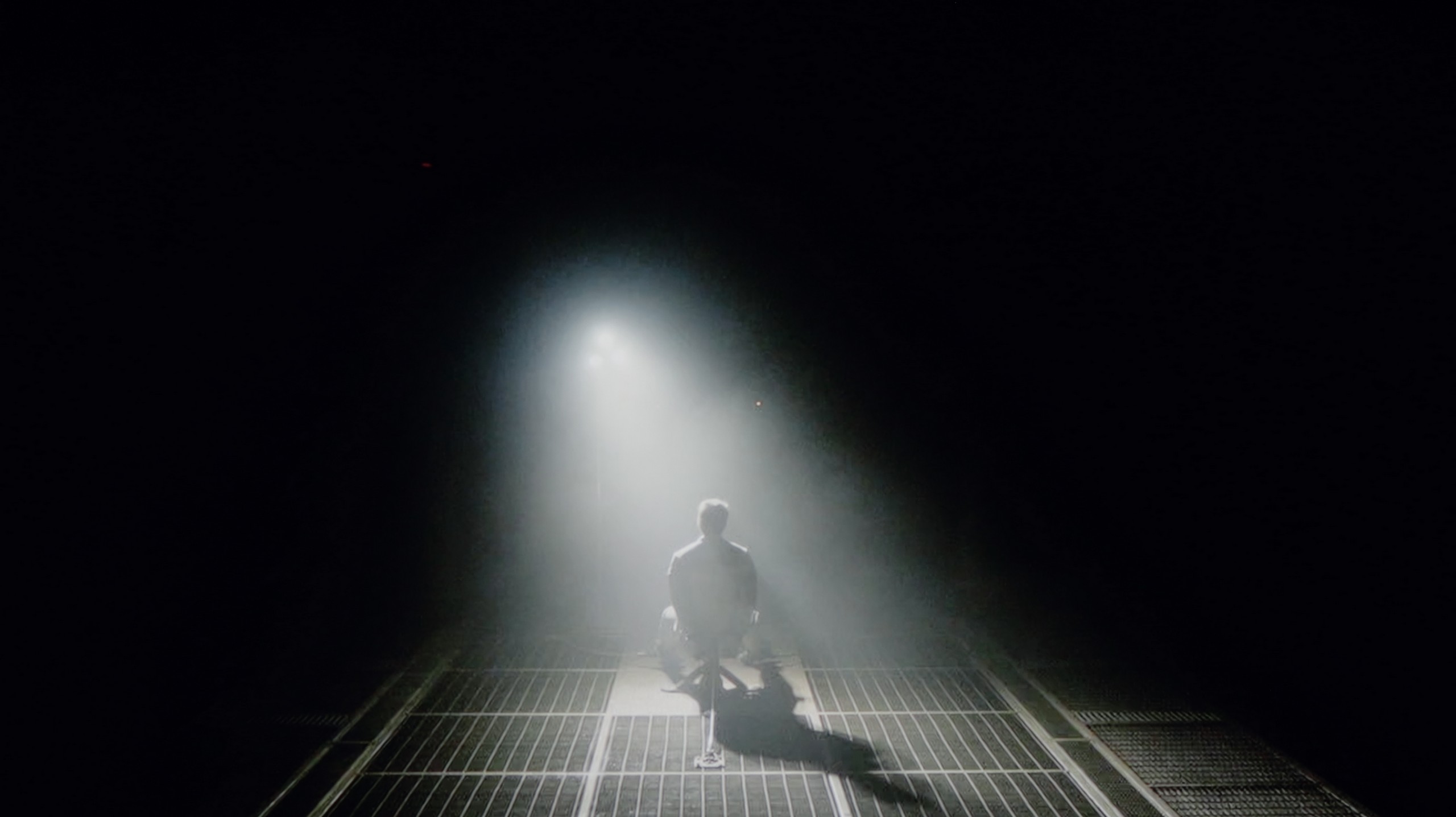
The Samsung U8000F, more specifically the U8092F model in the 55-inch version, is equipped with an IPS panel. Let's be honest – this is not the best choice when it comes to displaying blacks and contrast correctly. The results in this category are just poor. The contrast is abysmal, and watching dark scenes with any kind of "cinematic" effect is nearly impossible. Additionally, the fact that the television lacks local dimming doesn’t help, making it hard to achieve better results. The only thing that deserves praise is the fairly decent uniformity of the panel – but that's more of a small consolation. Overall, it's not good. If you care about deep blacks and reasonable contrast, it's definitely better to go for the variant with a VA panel, which performs significantly better in this particular series.
I must admit, when approaching a receiver in this price range, one instinctively crosses their fingers, hoping that at least the black won't be a gray blot. Meanwhile, the Haier Q80FUX, specifically the 55-inch model present in our editorial office, can very positively surprise in this regard. Its secret lies in using a VA panel, which by nature has an inclination for generating high contrast. And these are not empty promises. During screenings, in most film shots, the contrast consistently reported levels from 5000:1, often reaching as high as 8000:1. These are really strong results, considering the fact that this television does not possess any, even minimal, form of local dimming. Translating this into couch experiences: given its price realities, the Q80FUX offers simply solid blacks. Of course, it's not that perfectly velvety depth that makes the screen disappear into darkness. When we conduct a screening in conditions of complete isolation from light, we will notice that in the darkest parts of the image, the black reveals its budget origins, slightly shifting towards a bluish tint. However, this is a defect easy to mask – just a little light from a lamp in the corner of the room is enough for this nuance to become invisible, and the image to regain a satisfying depth.
HDR effect quality
3/10
4.9/10
Luminance measurements in HDR:

Result
191 nit

Result
224 nit

Result
241 nit

Result
79 nit

Result
234 nit

Result
308 nit

Result
327 nit

Result
352 nit

Result
330 nit

Result
344 nit
Scene from the movie “Pan” (about 2800 nits)


Scene from the movie “Billy Lynn” (about 1100 nits)


Static HDR10


Dynamic: HDR10+
Dynamic: Dolby Vision


HDR luminance chart:
Haier Q80FUX
HDR luminance
Samsung U8000F (IPS)
HDR luminance
Better does not mean good – and that perfectly summarizes the capabilities of the U8092F when it comes to displaying bright movie scenes in HDR mode. The brightness of the panel is just under 250 nits, which is definitely too little to enjoy any lighting effects. An interesting situation was noted during the measurement of the fourth scene from the movie Sicario 2 – the television clearly dimmed the entire screen in an attempt to achieve better black levels (which are still weak). One could even suggest that the device uses some form of "global dimming," but unfortunately, the results are still very poor. To make matters worse, the television does not support a wide color gamut – the coverage of the DCI-P3 space is about 80%, so there’s no hope for truly vibrant colors. HDR images here look rather like lightly brightened SDR, and that's the form we would suggest sticking to when it comes to this television.
Alright, let's move on to the topic that generates so much discussion, namely the capabilities of the TV in HDR mode. Let's make it clear right away: the Haier Q80FUX is certainly not a brightness demon. The panel of this receiver can generate about 350 nits at peak, which in today’s reality is an absolute minimum to even talk about the presence of extended HDR tonal dynamic range. On the plus side, this power is at least stable – regardless of the test pattern or movie scene we used, the measurements invariably oscillated around 300-350 nits. These are therefore at best adequate results, definitely far from the stunning showcase of capabilities that we know from more expensive models. Fortunately, there is one aspect in which the Q80FUX makes up for these shortcomings and does so abundantly. After all, we are talking about a QLED TV (or more precisely, PFS LED), which means that thanks to the quantum dot filter applied to the matrix, it can generate really juicy, vibrant colors. These are not empty promises – a DCI-P3 color gamut coverage reaching nearly 95% is an impressive result that directly translates into very pleasant, saturated colors for the eye.
Factory color reproduction
6.5/10
4/10

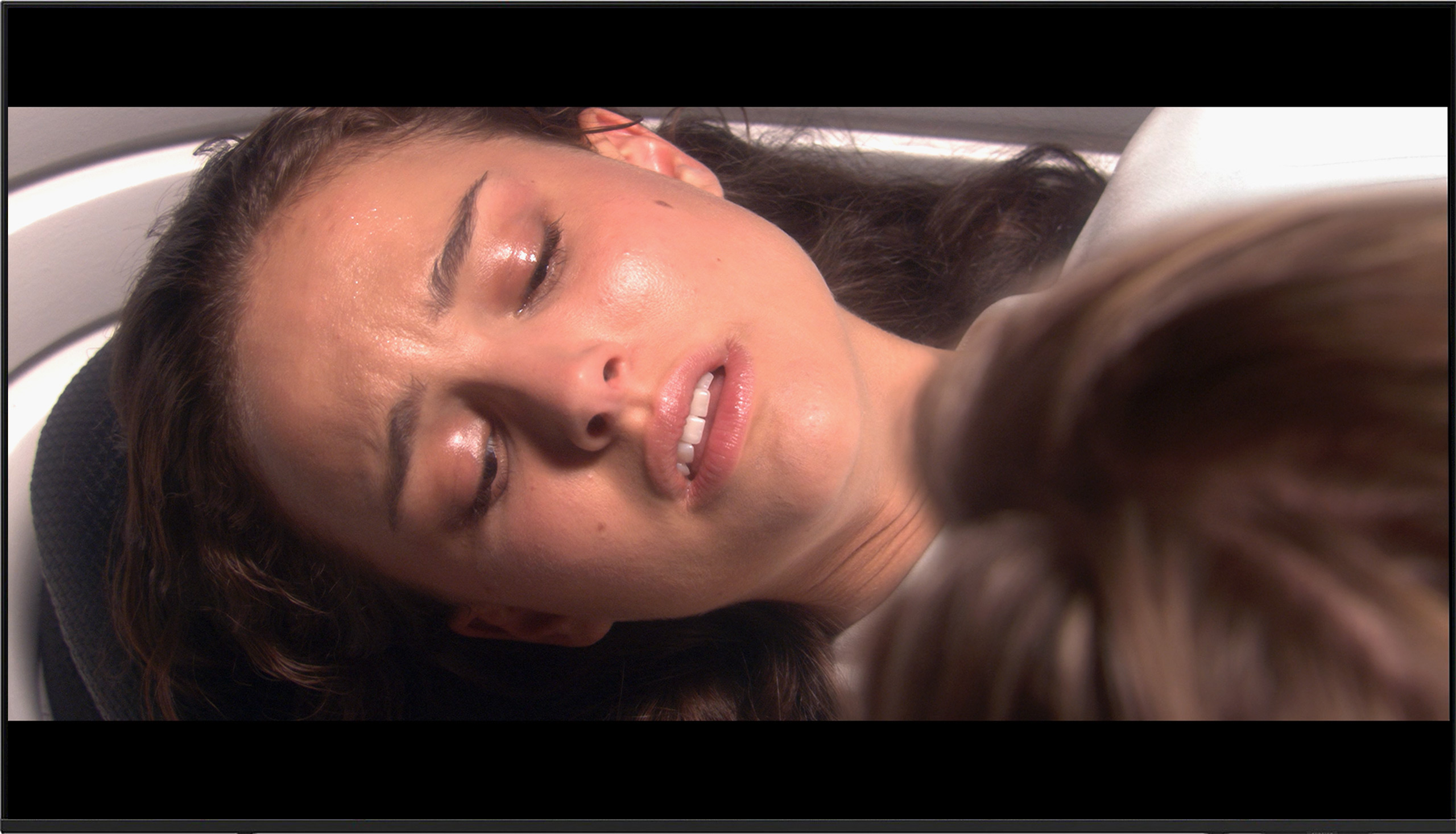
Factory Mode
After calibration
The Samsung U8000F was tested in the best possible picture mode built into the TV, which is Filmmaker Mode. This mode should – at least in theory – offer a cinematic, reference-quality image without unnecessary enhancements. For SDR content (mainly HD/SD), the TV performed surprisingly well straight out of the box. White balance errors hovered around a value of 3, which is roughly at the threshold of perception. The only complaint could be about brightness management – the gamma chart showed a slight tendency to brighten or darken certain areas, but overall it performed quite well for this price segment.
Unfortunately, it looks much worse in HDR mode. Although the white balance wasn't terrible, the TV had significant color errors – particularly noticeable on the Color Checker chart, where almost every sample landed outside the target point. The HDR image simply looks unnatural, and colors can be shifted, dull, or too cool. This largely stems from the fact that the U8000F does not support a wide color gamut (DCI-P3). The TV is physically incapable of displaying accurate colors in HDR standard – and this unfortunately shows in every more demanding material.
Factory settings for film mode are rarely perfect, but in the case of the Q80FUX, we encountered a noticeable imbalance. In SDR content, the image was definitely too warm, which resulted from an excessive amount of red in the white balance, giving it a slightly sepia tone. Contrarily, in HDR materials, the television fell into the other extreme—the excess of blue created an unnatural, cold effect. However, it wasn’t the whimsical white balance that was the biggest problem with this TV. The real culprit, responsible for the previously described issues, was hidden deeper. It turned out that the Q80FUX had completely misaligned gamma values and, crucially for HDR, a poorly managed EOTF curve. It was these erroneous factory settings that caused notorious clipping of the brightest parts of the image, applying that characteristic milky filter over them. Thus, we found the source of the problem. This state of affairs led to overall, significant color errors that were easy to catch even for an untrained eye. Like every television we tested, we decided to calibrate this model as well, and you can find the results of those adjustments in the next paragraph.
Color reproduction after calibration
7.5/10
6.1/10




Although the U8000F offered quite a decent picture in SDR right out of the box, we were able to adjust it a little more. We managed to eliminate a slightly purplish tint and calibrate the gamma to a more reasonable level. However, the television still tends to overemphasize the smallest and brightest parts of the image – the gamma chart shows a characteristic "dip" that is difficult to completely correct.
Unfortunately, the situation looks worse in HDR. It's hard to talk about any significant improvement here – the television is simply not designed for HDR content. We tried to adjust the picture in the advanced settings, but despite everything, the color errors remained quite large – a delta E above 7 indicates noticeable deviations. It's a bit of a shame, but that's the charm of a budget design. In SDR, the U8000F performs just fine, while HDR is simply not its league.
The results of our calibration efforts must, unfortunately, be considered twofold. Overall, the image is indisputably better than before the corrections, but the biggest winner of this process turned out to be SDR content. It is here, after clarifying the gamma and white balance graphs, that we obtained results that can confidently be called very good. After the setup, the Q80FUX truly shines in standard dynamics, showing only slight errors in the most challenging skin tone reproductions. Unfortunately, the weakest link still remains HDR content. And here lies the paradox: even though we managed to calibrate the white balance almost to perfection, the overall color errors still remain at a fairly high level. The reason is that the television still interprets the static HDR10 metadata "in its own way," stubbornly enforcing that unfortunate washed-out image effect, which inevitably leads to significant distortions. Although we successfully eliminated the factory excess of blue color, due to this electronic interference, the screen can still tend to fall into somewhat too cold tones. This television just has it this way.
Smoothness of tonal transitions
9/10
7.5/10












Another important thing to pay attention to when assessing image quality is the smoothness of tonal transitions – that is, how well the television handles blending colors and shades. Here, the Samsung U8092F performs... almost perfectly. On the tested screens, there are no visible banding issues, no problems with color gradients, and the overall image is not artificially sharpened, which unfortunately happens in many televisions of this class. The image looks natural and very clean. We noticed minimal issues with the brightest scenes, but that’s more of nitpicking that only a very discerning eye would catch.
Analyzing the television's ability to handle subtle tonal transitions, known as "banding," leads us to interesting conclusions. The Haier Q80FUX skillfully blends neighboring colors in most scenes, creating a smooth, cohesive image. However, this is not an ideal process. During the tests, we noticed minor issues and imperfections in every test scene we used. These are perhaps not errors that aggressively catch the eye and spoil the movie experience, yet their presence is worth noting. Interestingly, this receiver shows no particular weaknesses or strengths in this regard – it handles this challenge exactly the same, whether displaying delicate gradients of a bright sky or dark transitions in shadows.
Image scaling and smoothness of tonal transitions
5/10
4/10
Smooth transition function
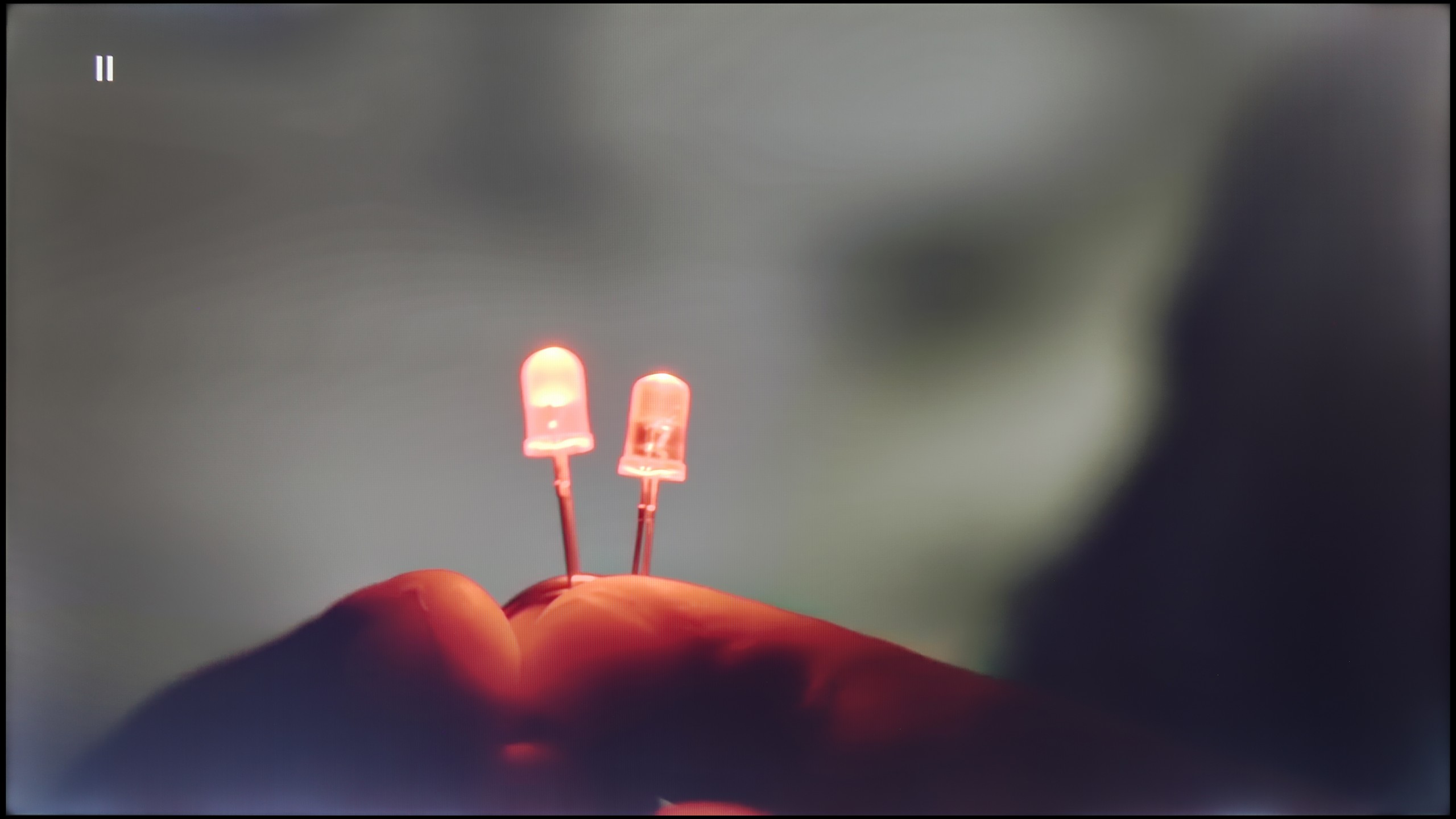
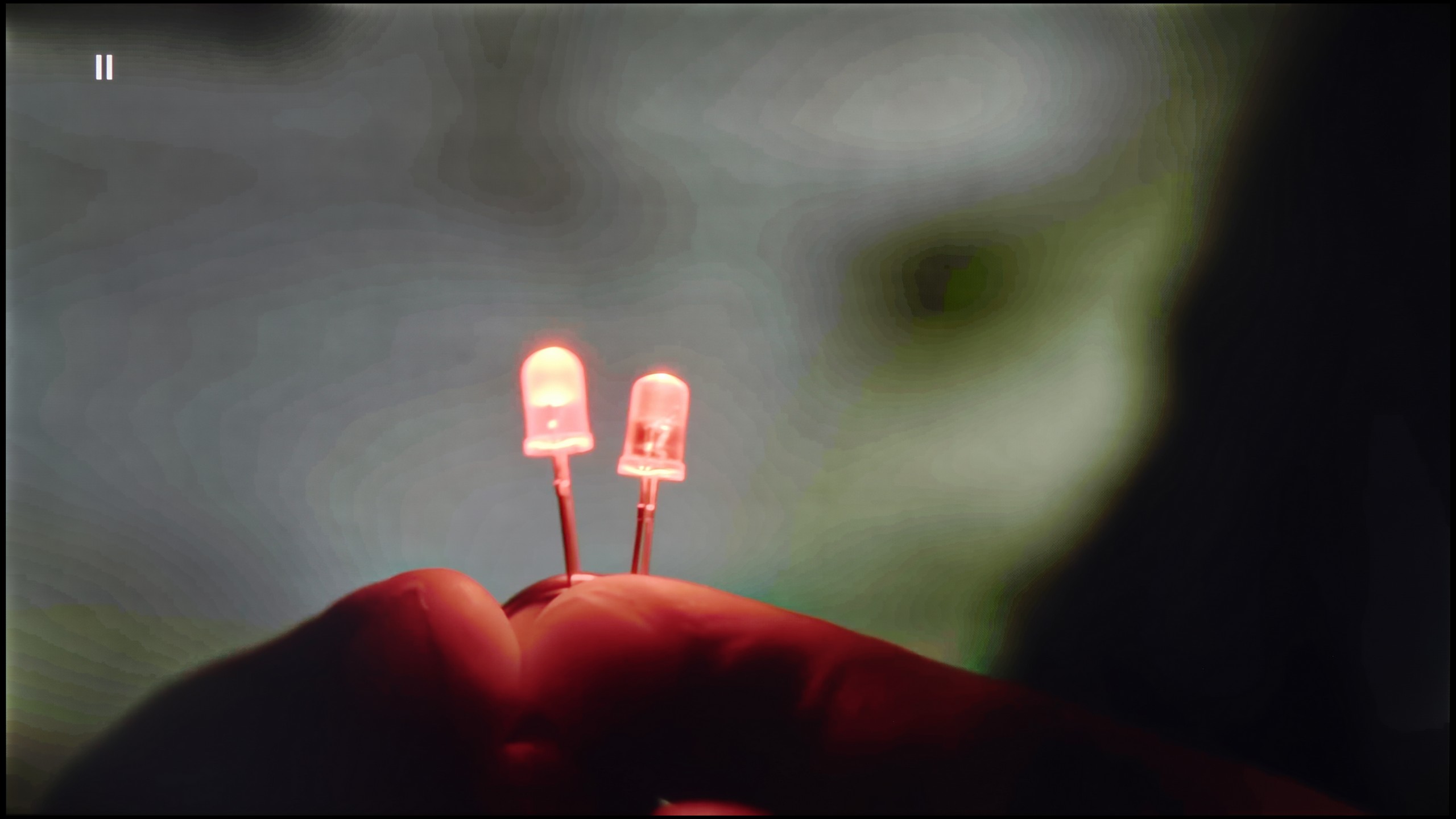
Image without overscan on the SD signal


When it comes to how the Samsung U8000F handles lower-quality materials, we have to admit that Samsung has made progress compared to its predecessor from last year – the DU7192 model, which theoretically occupies the same place in the lineup.
This year's model is equipped with a function to improve the fluidity of tonal transitions, which has been implemented much better than last year. Yes, the television still uses quite strong algorithms that can distort details or remove film grain, but even so – it can be confidently said that it works effectively.
However, not everything went perfectly. The U8000F has noticeable issues with slight frame cutting when watching very old content in very low resolution. If someone plans to play their old VHS tape, they should be prepared for the image to appear slightly “cut off.”
If there is one area where Haier clearly shows that it has quite a bit to catch up on compared to the market leaders, it is digital image processing. The upscaling, well... is just okay. And that's about all that can be said about it. It does what it is supposed to do: it ensures that lower resolution signals don't scare you with harsh pixelation on the screen and don't look like an overly enlarged postage stamp. However, it is far from the finesse and "intelligent" sharpening that more experienced players in this market have developed over the years. The biggest drawback of the Q80FUX software, however, is the almost complete lack of additional "cleaning" and smoothing functions for the image. The receiver does not offer any noise reduction or gradient enhancement mechanisms. This means that with older or more heavily compressed materials, we simply have to accept that any imperfections in tonal transitions or color blending, which we mentioned earlier, will constantly accompany us during the viewing.
Blur and motion smoothness
4.5/10
4.5/10
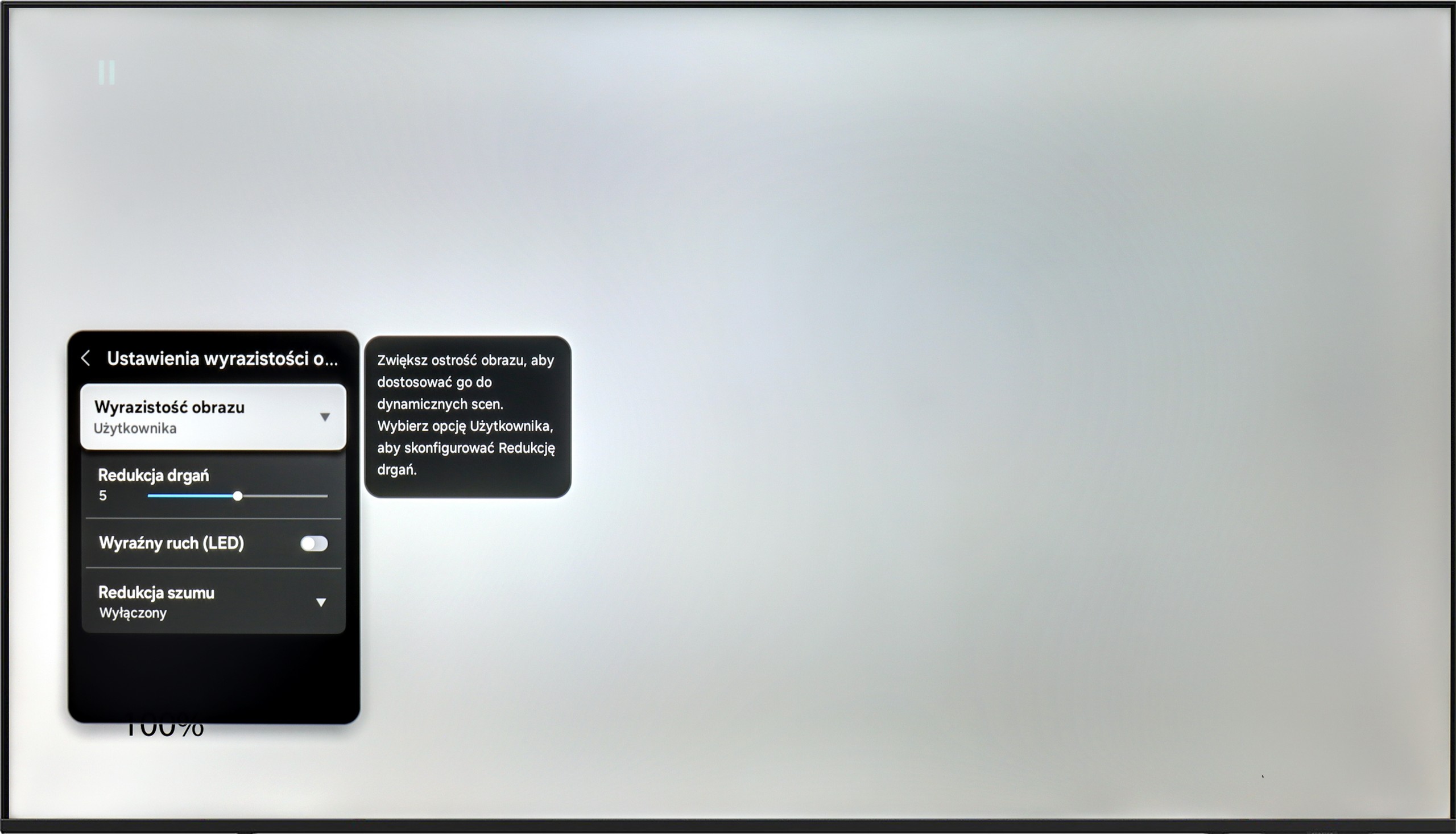
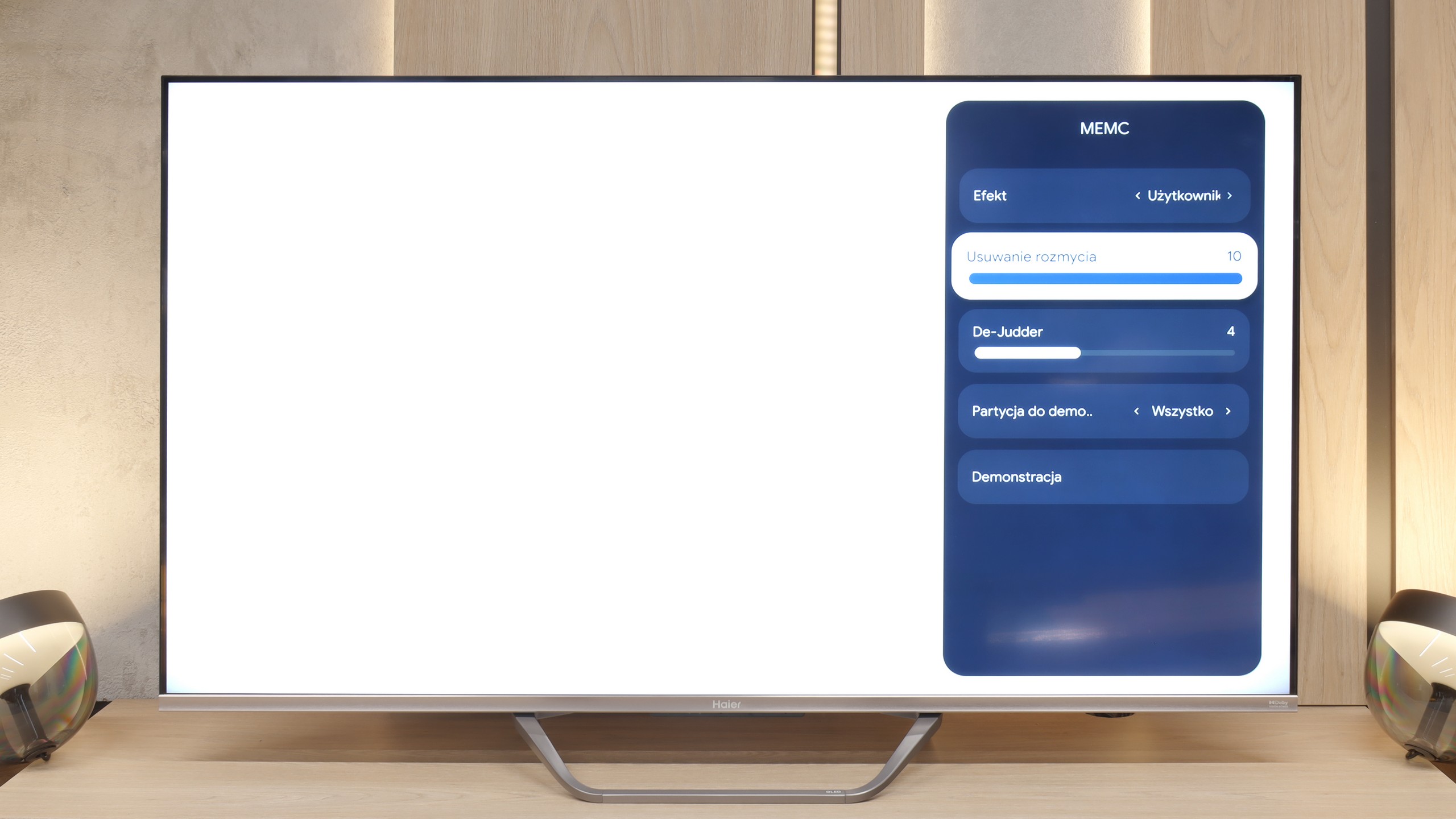
Blur (native resolution, maximum refresh rate):



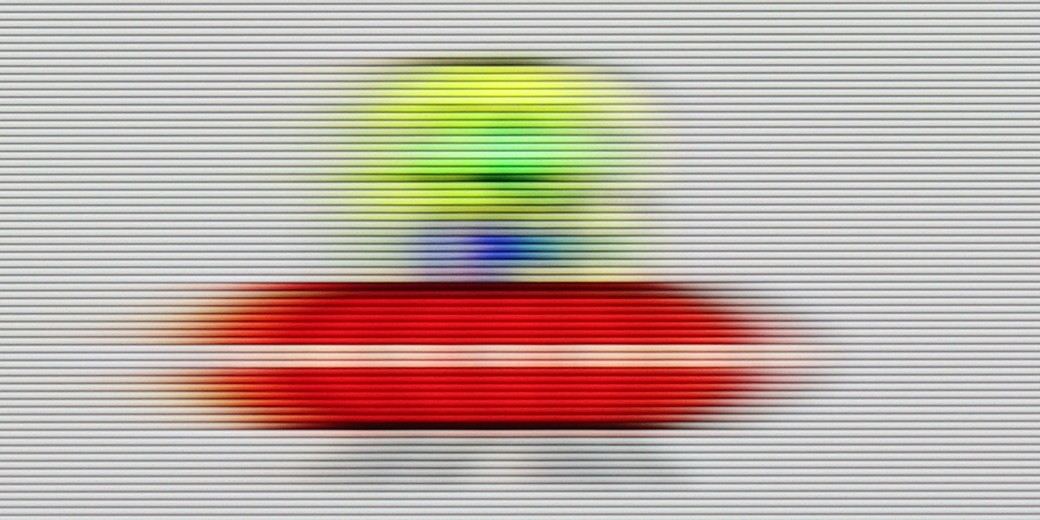
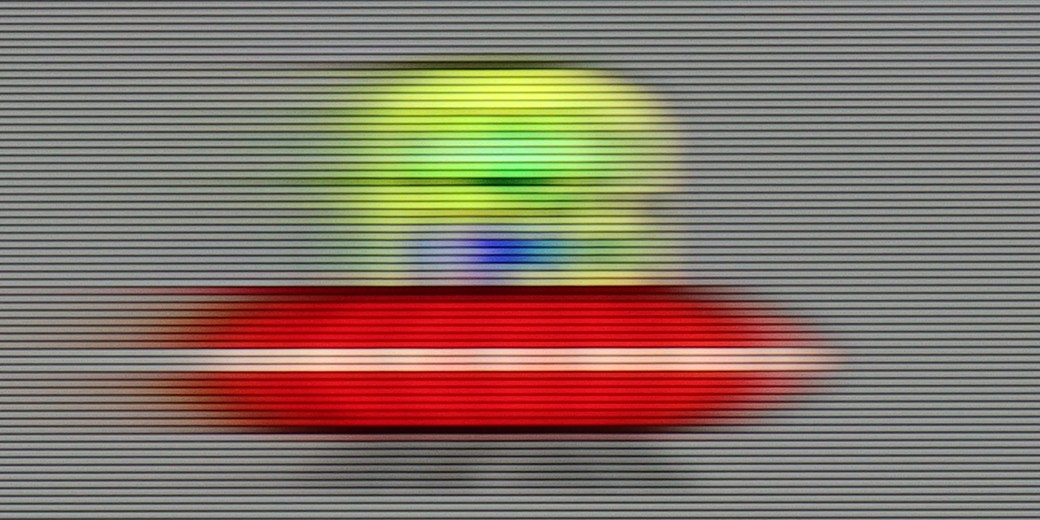
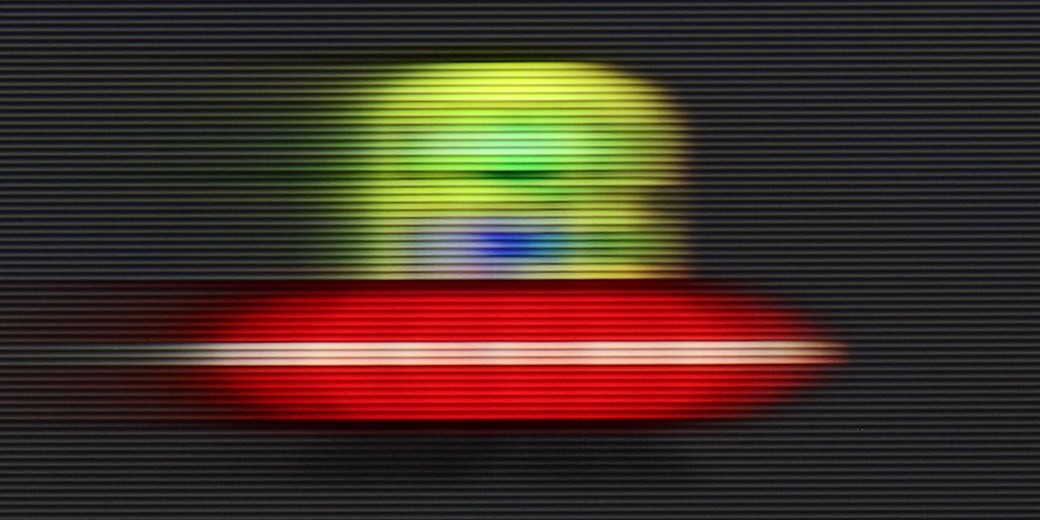
The Samsung U8000F is equipped with a 60 Hz panel, so right from the start, it’s clear that we shouldn’t expect any miracles. This is simply the standard in this class – sufficient for everyday viewing, but without any fireworks.
The TV offers one motion smoothing slider – a feature called "Motion Blur Reduction", which allows us to adjust the smoothness of the image in movies. Higher settings provide a more "theatrical" and smoothed effect, while lower settings help retain the original character of the film with a slight 24p effect. Interestingly, there is a feature called "Clear Motion LED", which is a BFI mode – that inserts black frames between the frames of the picture to improve motion clarity. However, in practice, the screen flickers significantly when activated, and it should be regarded more as an experiment than something that realistically enhances gaming comfort.
The issue of motion fluidity and blurring is largely predetermined by the use of a 60Hz panel, which naturally makes it difficult to recommend this receiver to enthusiasts of very dynamic content. Fortunately, in the Q80FUX, we find a few options (though, as we will see shortly, actually only one) designed to improve the experience with older film productions. There is a "De-Judder" slider available, which indeed affects the smoothness of the image and allows us to adjust it to our preferences: from raw, cinematic frame rates to a more theatrical, smoothed presentation. However, a genuine surprise awaits us right next to it in the menu. There is also a second slider, supposedly dedicated to eliminating blur – this is a feature we usually encounter in 120Hz panels, aimed at combating motion blur in sports. However, as expected, recalling memories from testing the K85F model, here too this slider is merely a facade. Moving it does absolutely nothing to the image and it simply looks like an oversight by the product engineers who left a non-functional option in the software for this type of panel.
Console compatibility and gaming features
4/10
5.6/10
- ALLM
- VRR
- VRR range48 - 60Hz48 - 120Hz
- Dolby Vision Game Mode
Yes, high input lag
- Correct implementation of HGIG
- 1080p@120Hz
- 1440p@120Hz
- 4K@120Hz
- Game bar
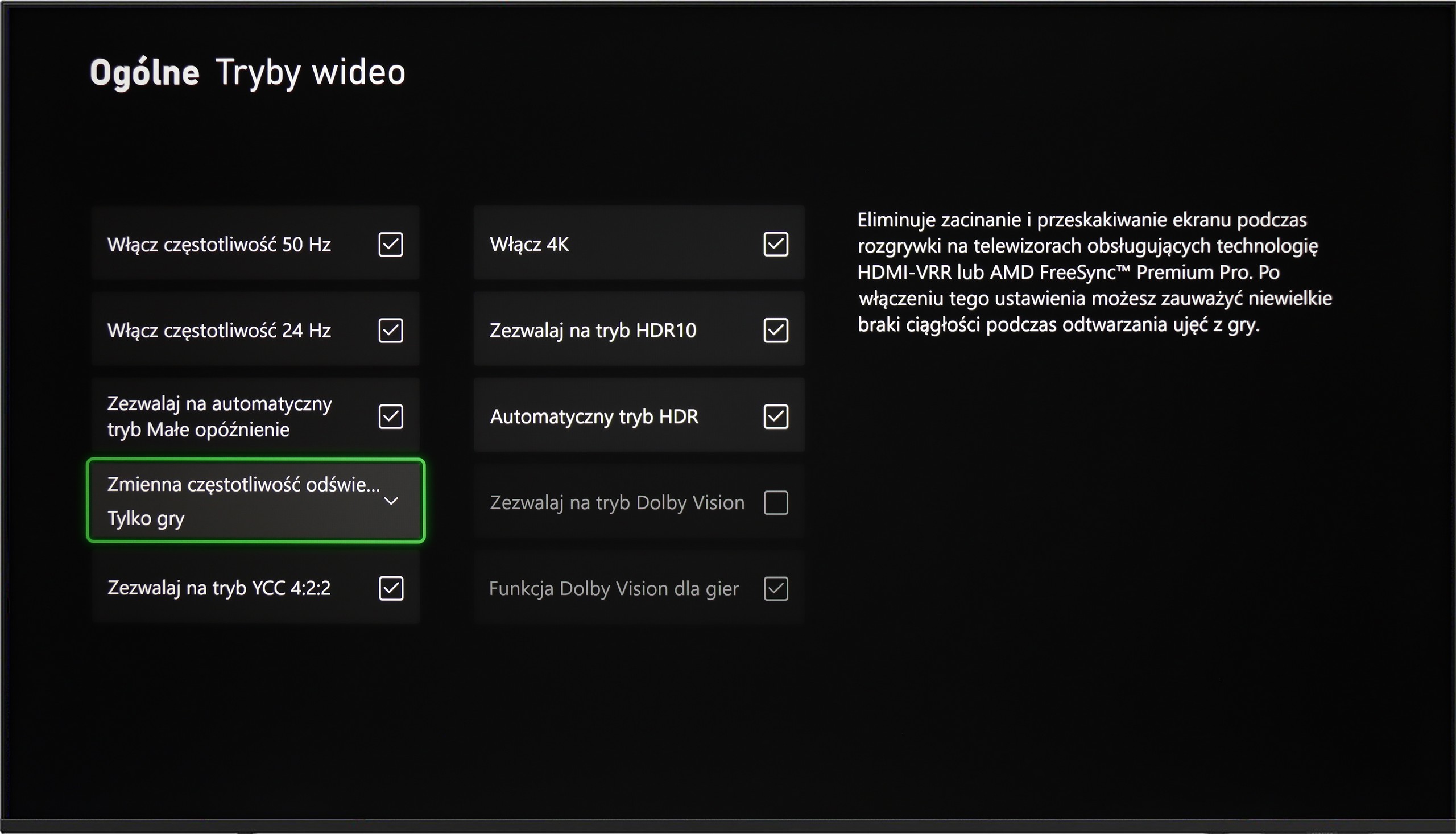
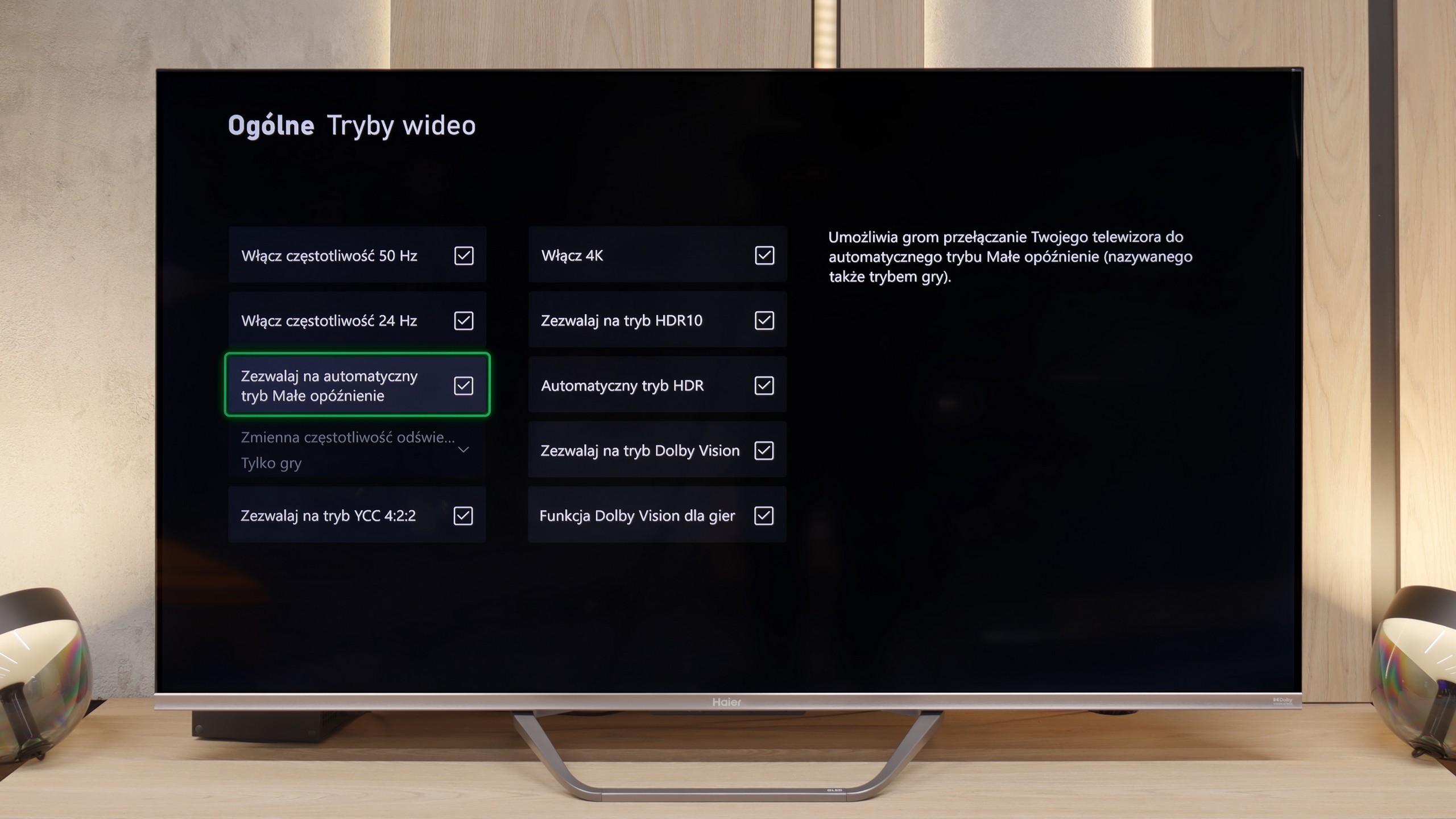
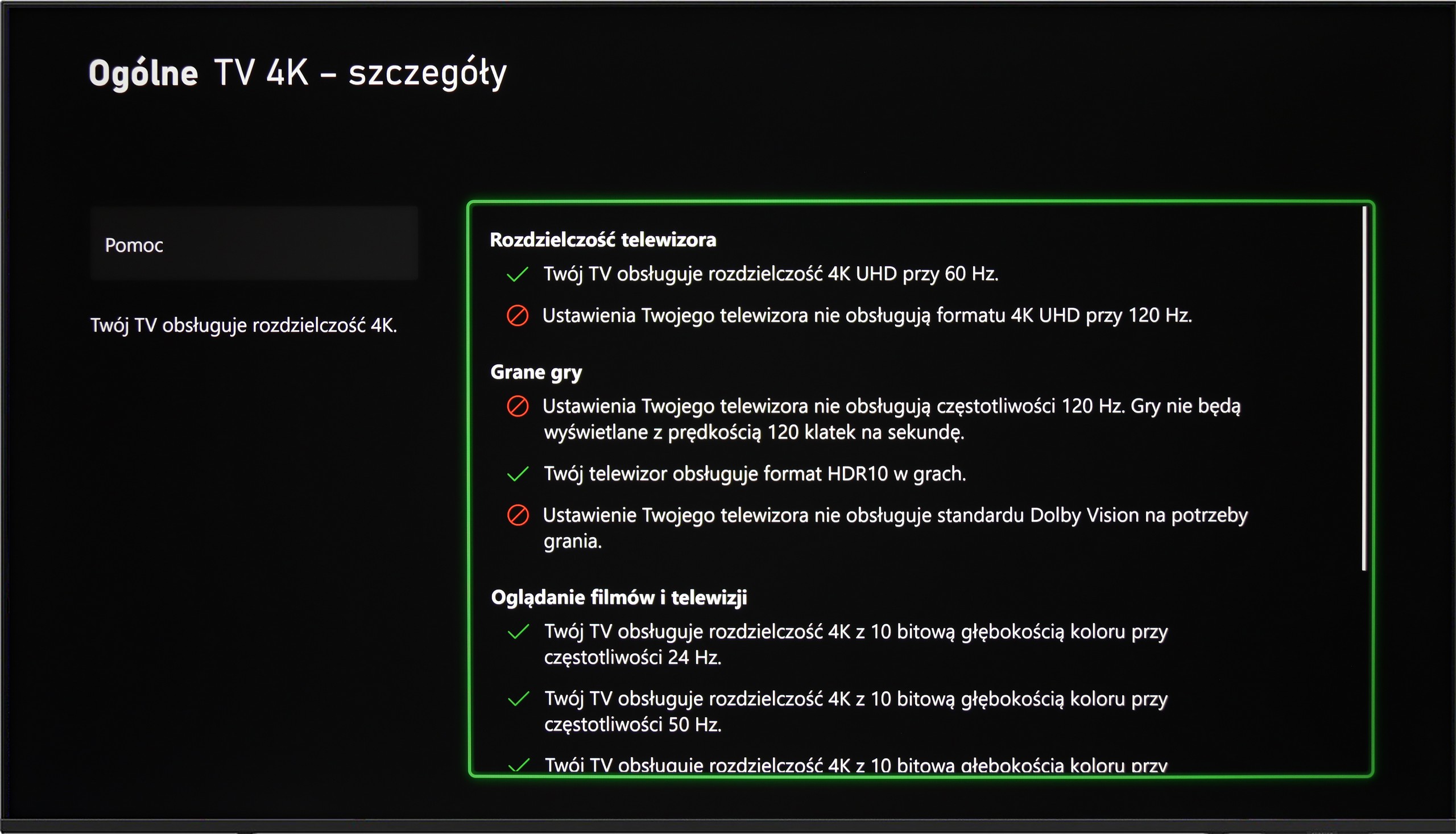
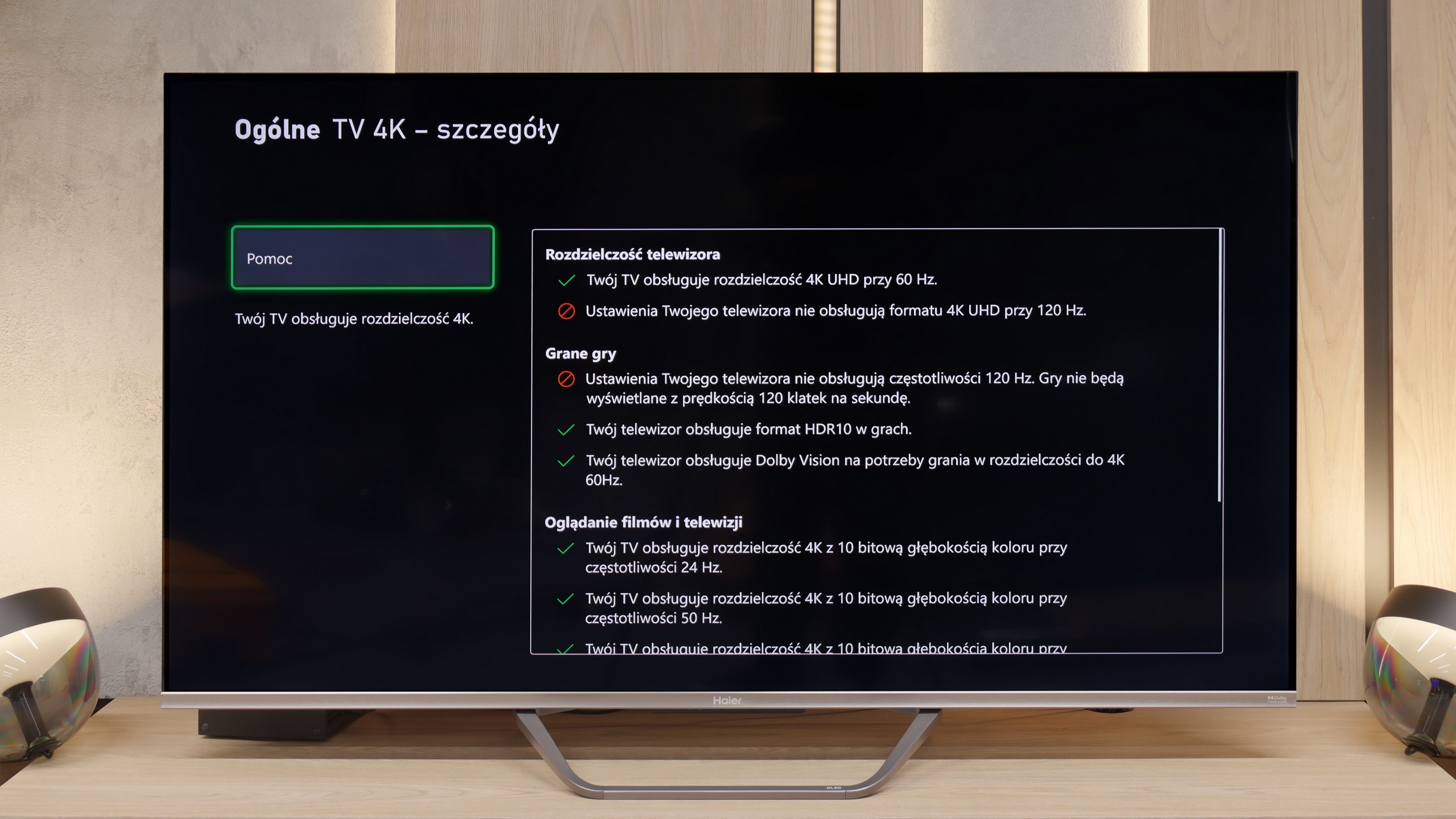
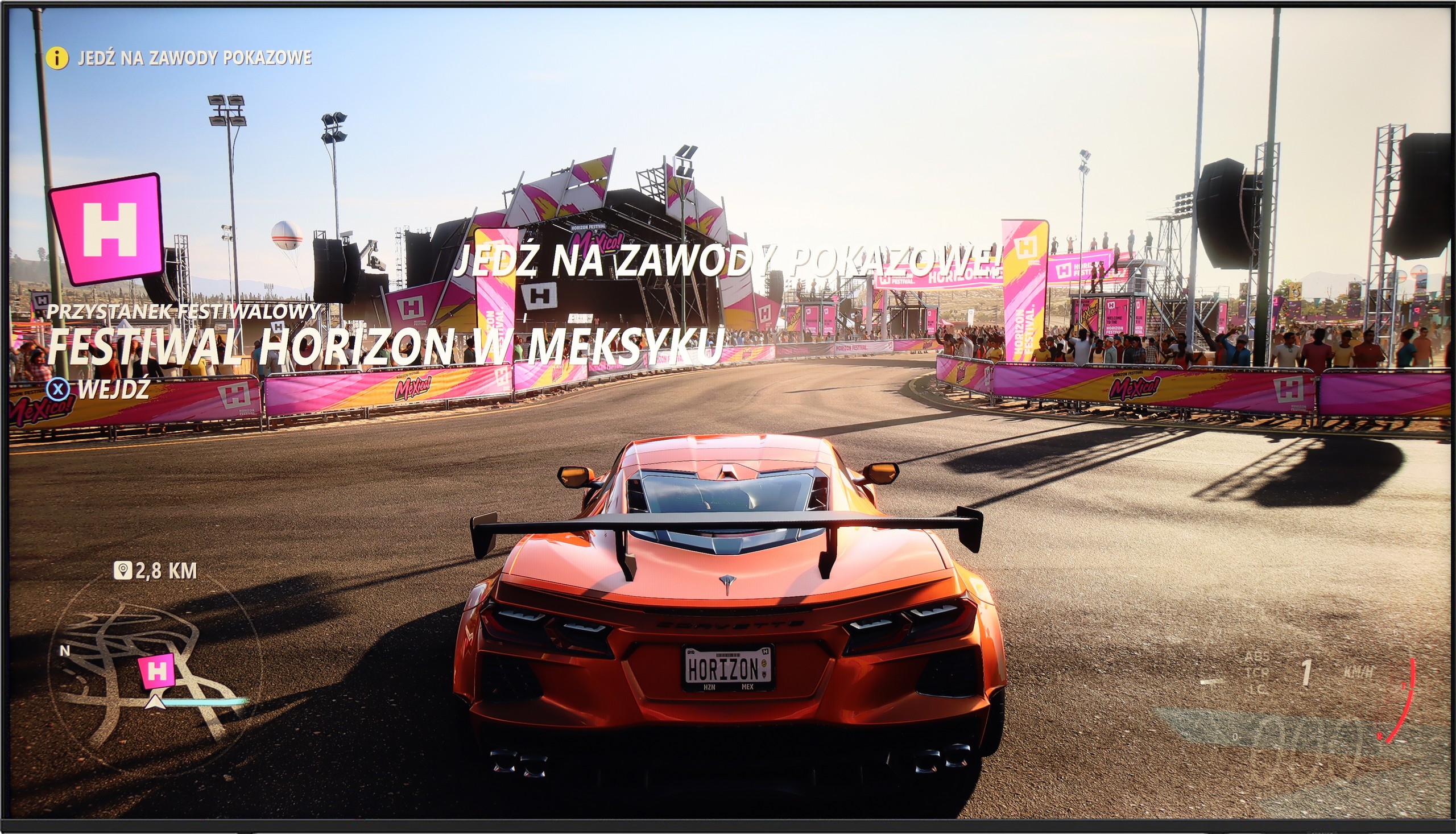



Samsung U8000F offers a basic set of features for gamers, which nonetheless may be sufficient for less demanding users. We have an automatic game mode here – when a game is launched on the console, the TV automatically switches to low latency mode, which significantly improves response time. We also find the VRR feature, or variable refresh rate, which operates within a range of 48 to 60 Hz. This means that both Xbox and PS5 will not produce the "tearing" effect, as long as we stay within this range.
And unfortunately, that's about it for the advantages. Add-ons like Game Bar or higher refresh rates are reserved for the higher models of Samsung from the 2025 line. In theory, the TV also supports the HGiG feature, which should adjust HDR images to the intentions of game developers. Unfortunately – even though this feature appears in promotional brochures and store materials – its configuration on the Xbox console turned out to be... impossible in practice.
Stepping into the gaming territory, the Haier Q80FUX proves to be quite a decent companion for the "casual gamer." On board, we find today’s highly desired features like VRR (variable refresh rate) and ALLM (automatic low latency mode). However, the biggest surprise is something else. Although we are not dealing with a 4K@120Hz panel, the TV can accept and display a 120Hz signal at a lower resolution (Full HD). This is a very useful feature, allowing the conscious switch of the console to a lower resolution mode in exchange for significantly higher fluidity, which is a perfectly acceptable compromise in the gaming world.
We won’t particularly complain about the lack of extras like the "Game Bar," as it’s just a nice addition. The most concerning issues arise when we enter the world of HDR in games. Due to the fact that the TV constantly adapts the signal "in its own way," setting the brightness on the console according to the HGIG standard is nearly impossible to accomplish as per the instructions. Worse still, in the Dolby Vision mode for games, the input lag rises to about 50 ms, which is a high enough value that essentially makes this mode unusable. However, generally, we wouldn’t recommend gaming on this TV in HDR mode, so these aren’t such serious shortcomings. The most pleasing aspect is the presence of 120Hz in Full HD, which makes the Q80FUX quite a nice TV for the occasional gamer.
Input lag
10/10
9.4/10
SDR
HDR
Dolby Vision
The Samsung U8092F performed phenomenally in our input lag tests. Regardless of the resolution or mode, the results were very low, which is truly impressive for this price range. It can be safely said that gaming on this television will not cause irritation due to significant delays between what we do on the controller and what we see on the screen. For most gamers, even those who are more demanding, this result should be more than satisfactory.
If there is one category in which the Haier Q80FUX absolutely shines and shows its claws, it is input lag. In this area, the television presents results that are truly remarkable. In 120Hz mode (achieved, let’s remind ourselves, at a lower resolution), the input lag drops below 10 ms, which is an excellent value, worthy of high-end gaming monitors. Not much worse, and still at a very good level, is the classic 60Hz mode – here measurements steadily indicated around 12-14 ms. These are results that even significantly more expensive, gaming-specific designs would not be ashamed of. The only, but serious, drawback here is the Dolby Vision mode. As we established earlier, activating it raises the lag to an unacceptable level, so we definitely advise against using it during any interactive gameplay.
Compatibility with PC
6/10
6/10


Working on a computer using this TV is a real pleasure. The Samsung U8092F supports chroma 4:4:4, and thanks to the layout of the sub-pixels in the IPS panel, text readability – regardless of color or size – is very, very good. The TV is also suitable for occasional gaming on PC, mainly due to its low input lag. However, one must keep in mind that the G-Sync feature does not work on this model, which is strange because VRR worked without any issues when it comes to the console.
We also checked how the Q80FUX works when connected to a computer. And here’s another pleasant surprise – it handles this really very well. The most important thing is that the fonts are very readable, so nothing blurs and you can work on it normally. Additionally, just like with consoles: we can set a lower resolution here to achieve a high refresh rate of 120Hz in return. What’s super important is that in this mode, G-Sync started up and worked correctly. This just confirms that this television is really a successful and efficient piece of equipment for gaming, including on a PC.
Viewing angles
7/10
3.3/10
The viewing angles on the Samsung U8092F are very good – as is expected from an IPS panel. The picture doesn’t lose much in brightness or color saturation, even at greater angles from the axis. Of course, it's not on the level of organic screens – but it’s entirely sufficient for comfortably watching the image at an angle, e.g., from the side of the sofa.
Anyone planning screenings with a wide, family group must be aware of the fundamental compromise that Haier has opted for by implementing a VA panel in this model. This technology has indeed provided us with deep blacks and high contrast, but its inherent feature is also a noticeable narrowing of viewing angles. Just sitting a bit further to the side on the couch is enough to immediately notice how colors begin to lose saturation and the picture fades. It’s simply a classic trade-off – we gain something (contrast) at the expense of something else (angles) – and the Q80FUX fits perfectly into this scheme.
Daytime performance
3.4/10
4.8/10
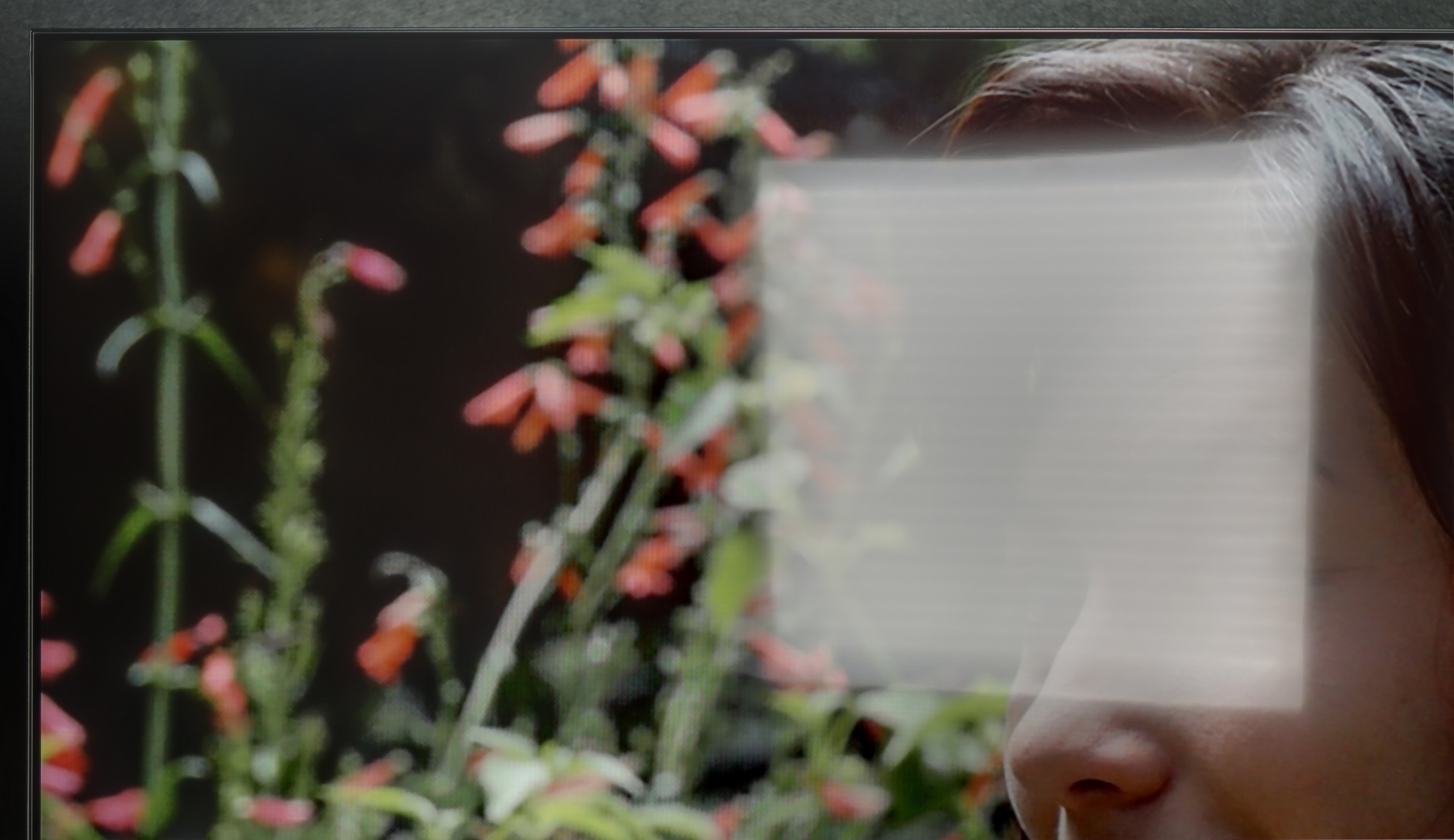
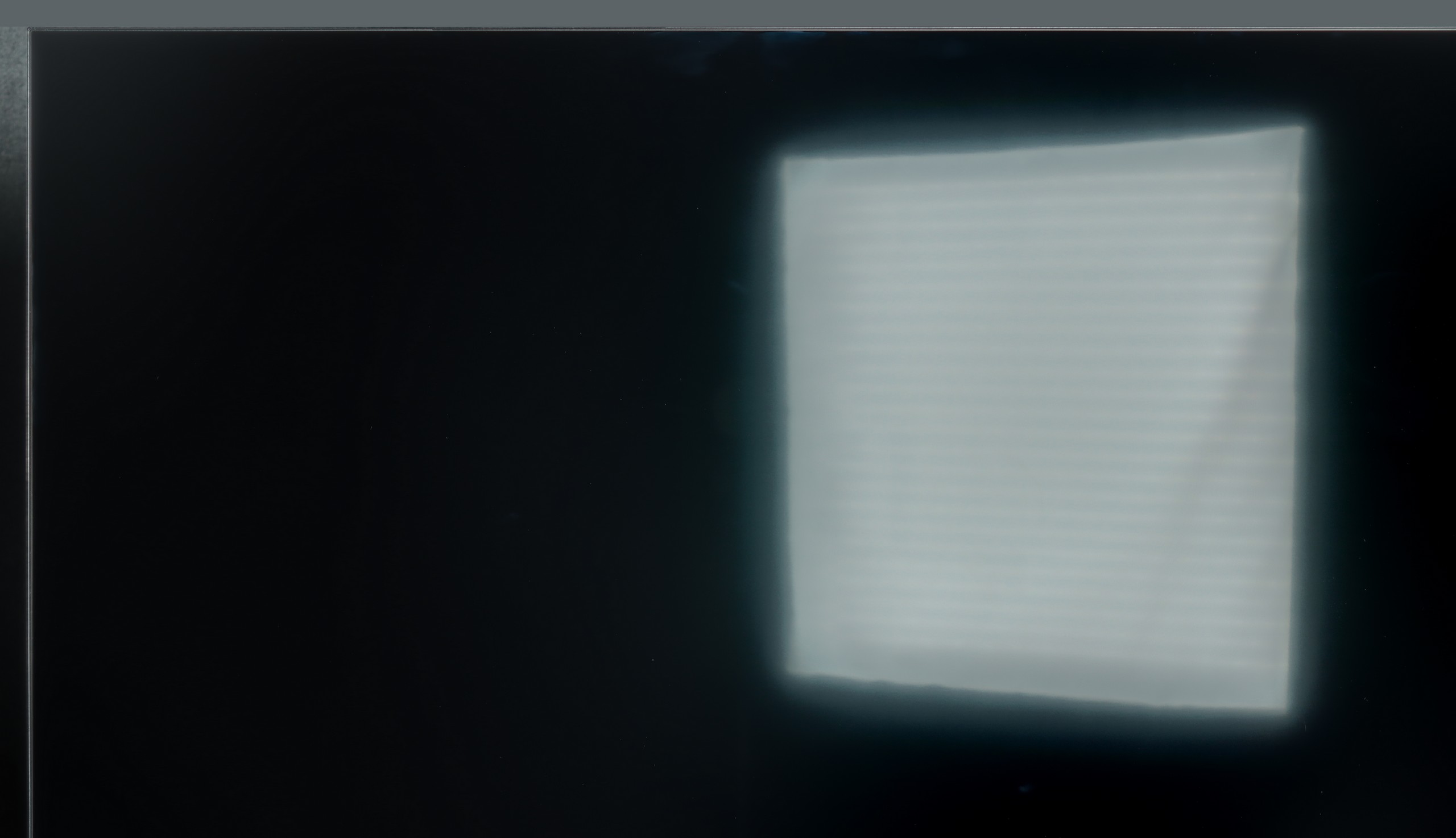
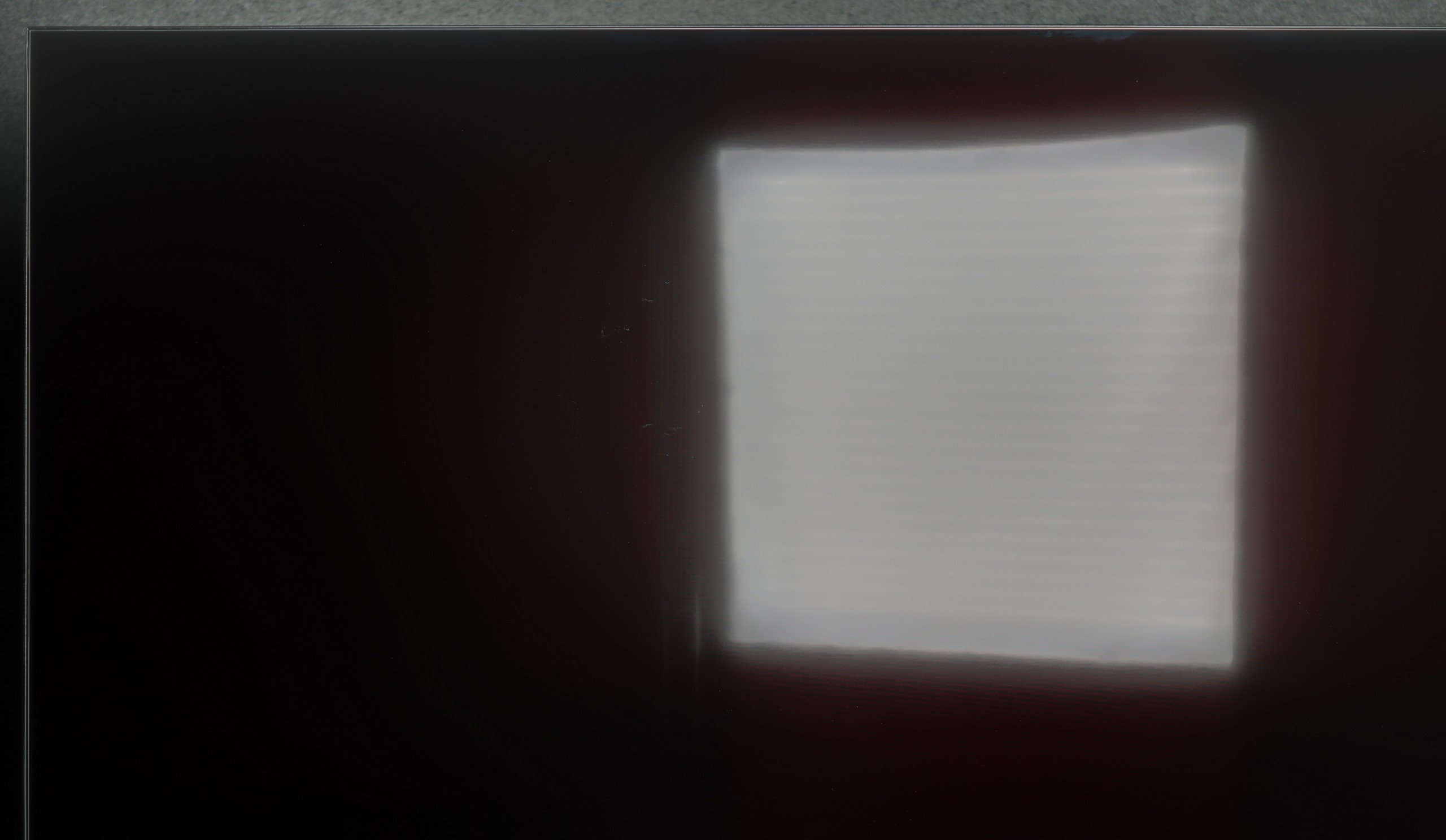

Panel brightness
Average luminance SDR
Haier Q80FUX: 317 cd/m2
Samsung U8000F (IPS): 218 cd/m2
Thanks to the satin coating of the Samsung U8092F matrix, it handles glare quite well. The screen does not act like a mirror, and the colors – considering the capabilities of this class of devices – remain fairly saturated, even in somewhat brighter conditions. Unfortunately, the coating itself cannot perform miracles. The television is simply too dark to effectively penetrate very challenging lighting conditions. If we place it in front of a light source (e.g., a large window or a strong lamp) – unfortunately, one must consider that not everything will be clearly visible on it.
The clash of the receiver with the everyday challenges posed by a bright living room turns out to be quite decent in the case of the Q80FUX, although it is certainly hard to call it ideal. The matrix itself is equipped with a coating that handles the suppression of most ambient reflections fairly well. Equally importantly, even in more challenging lighting conditions, the screen is capable of maintaining pleasantly saturated colors. However, the weakness of this construction reveals itself where the power of the backlight comes into play. The previously mentioned, rather moderate maximum brightness (around 350 nits) means that when confronted with intense natural light coming through the window, the screen often struggles to "break through." On a sunny day, the image may simply lack the necessary expressive power.
Panel details
Subpixel Structure:
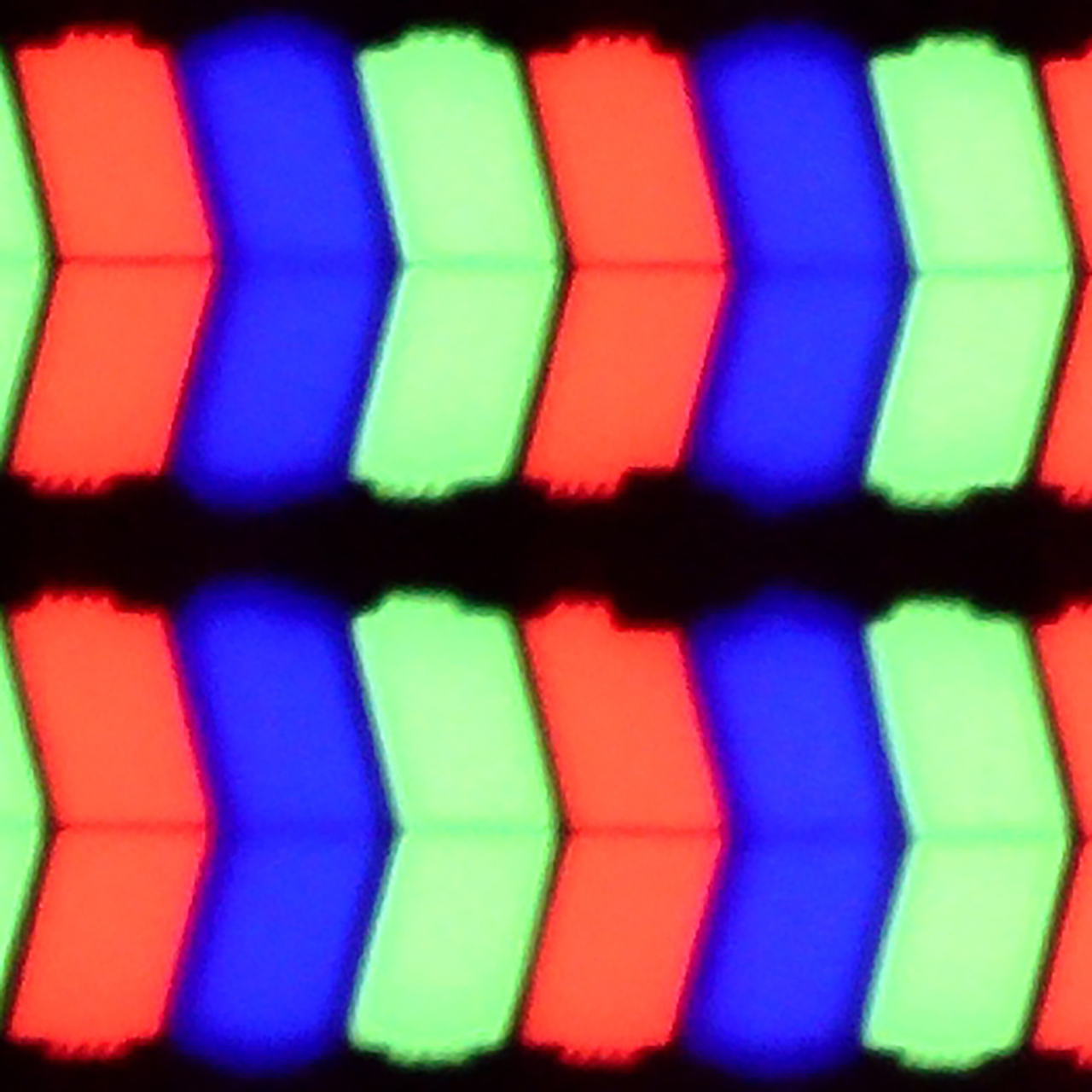
Panel uniformity and thermal imaging:


Samsung U8000F (IPS)
Haier Q80FUX
TV features
5.3/10
5.6/10
- HDMI inputs3 x HDMI 2.0, 0 x HDMI 2.14 x HDMI 2.0, 0 x HDMI 2.1
- Other inputsRCA (Chinch)
- OutputseARC (HDMI), ARC (HDMI)Toslink (Optical audio), eARC (HDMI), ARC (HDMI), Mini-Jack (Headphones)
- Network InterfacesWi-Fi 2.4GHz, Wi-Fi 5GHz, Ethernet (LAN) 100MbpsWi-Fi 2.4GHz, Wi-Fi 5GHz, Ethernet (LAN) 100Mbps
- TV receptionDVB-T, DVB-T2, DVB-S, DVB-S2, DVB-CDVB-T, DVB-T2, DVB-S, DVB-S2, DVB-C
Classic features:
- Recording to USB (terrestrial TV)
- Recording programming
- Picture in Picture (PiP)
- RF remote control (no need to aim at the screen)
- Backlit remote control
- Teletext
- Audio only mode
- Bluetooth headphones support
- Simultaneous Bluetooth headphones & TV audio
Smart features:
- AirPlay
- Screen mirroring (Windows Miracast)
- Voice search
- Voice search in native language
- Ability to connect a keyboard and mouse

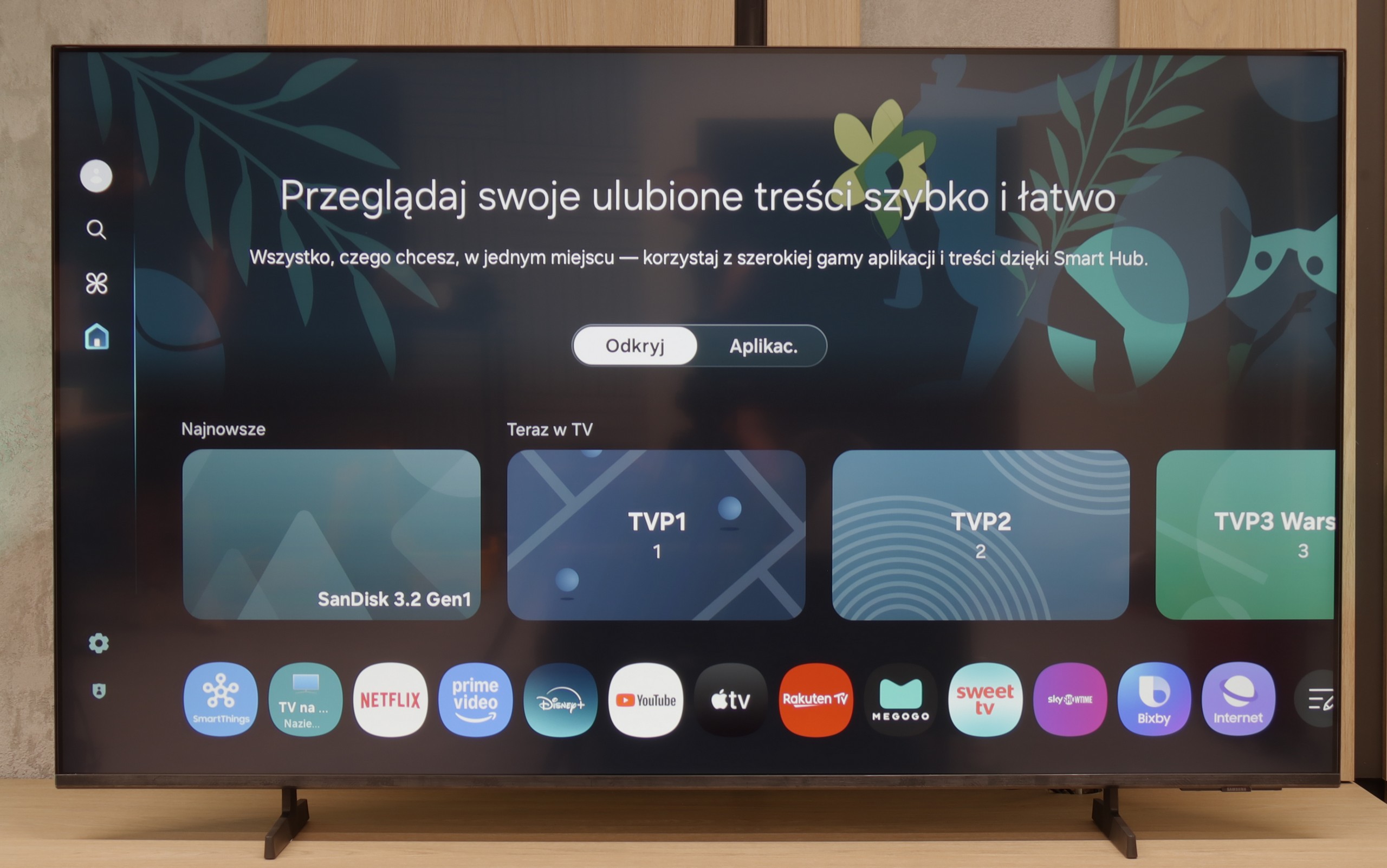
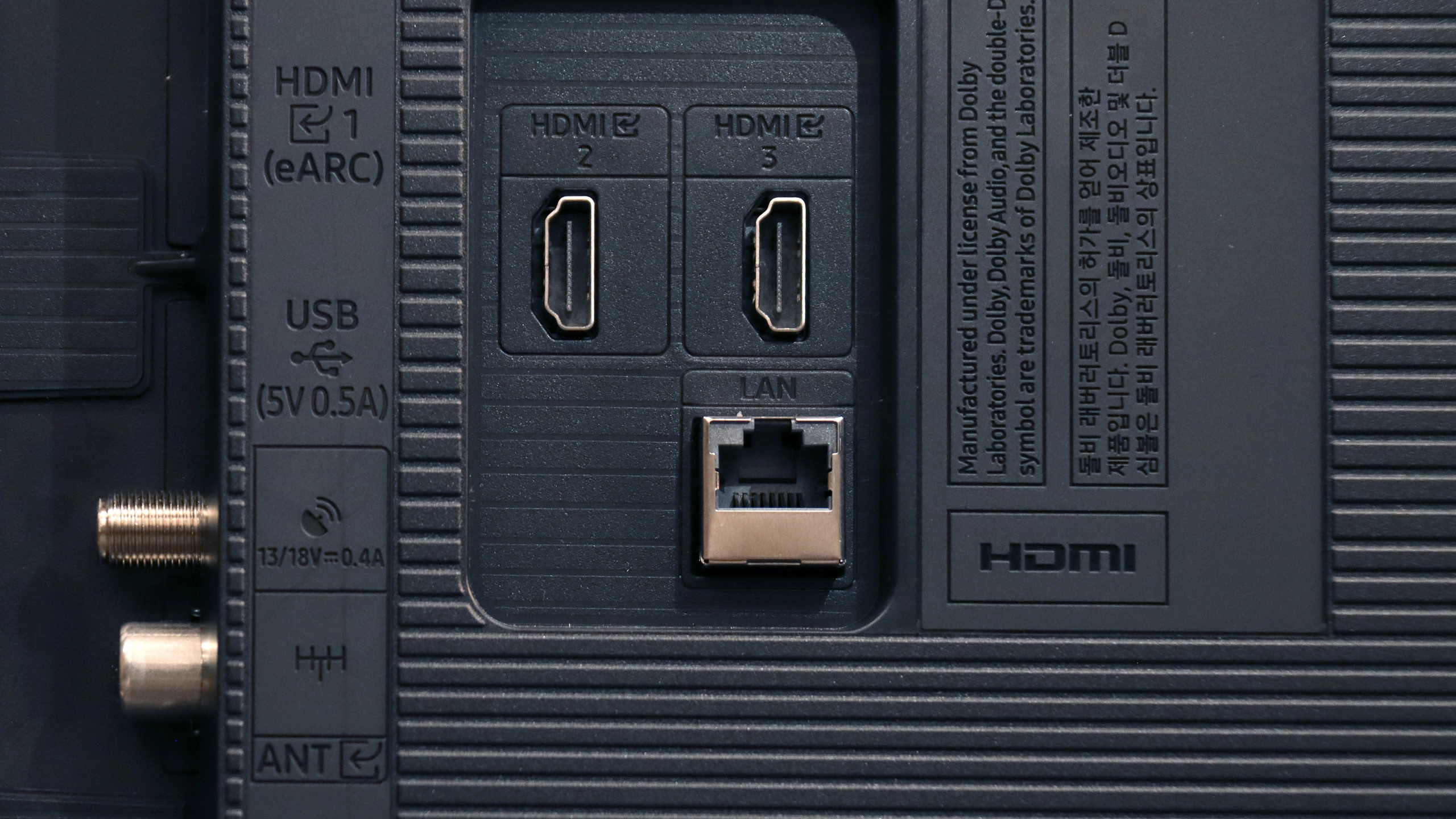
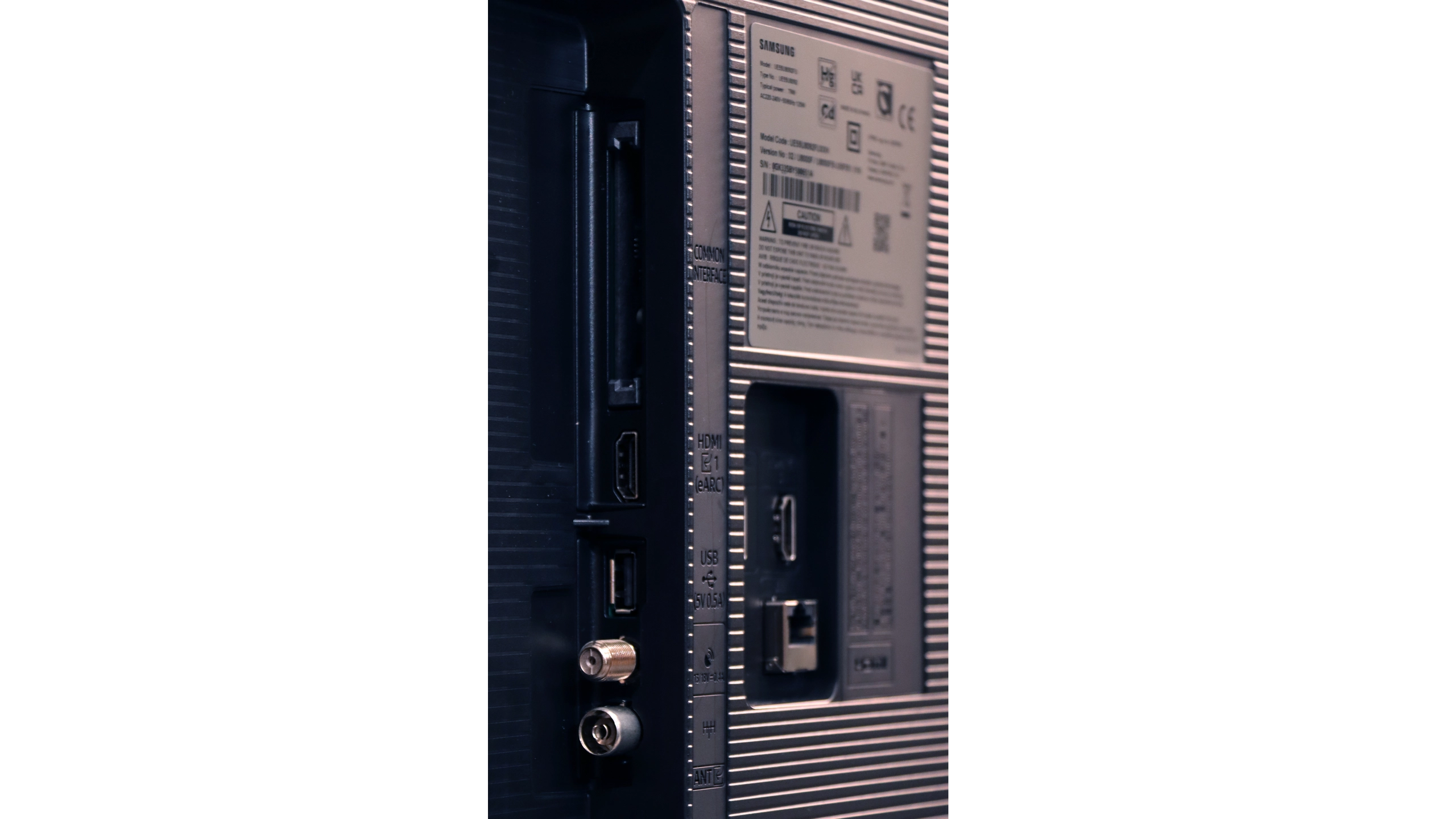
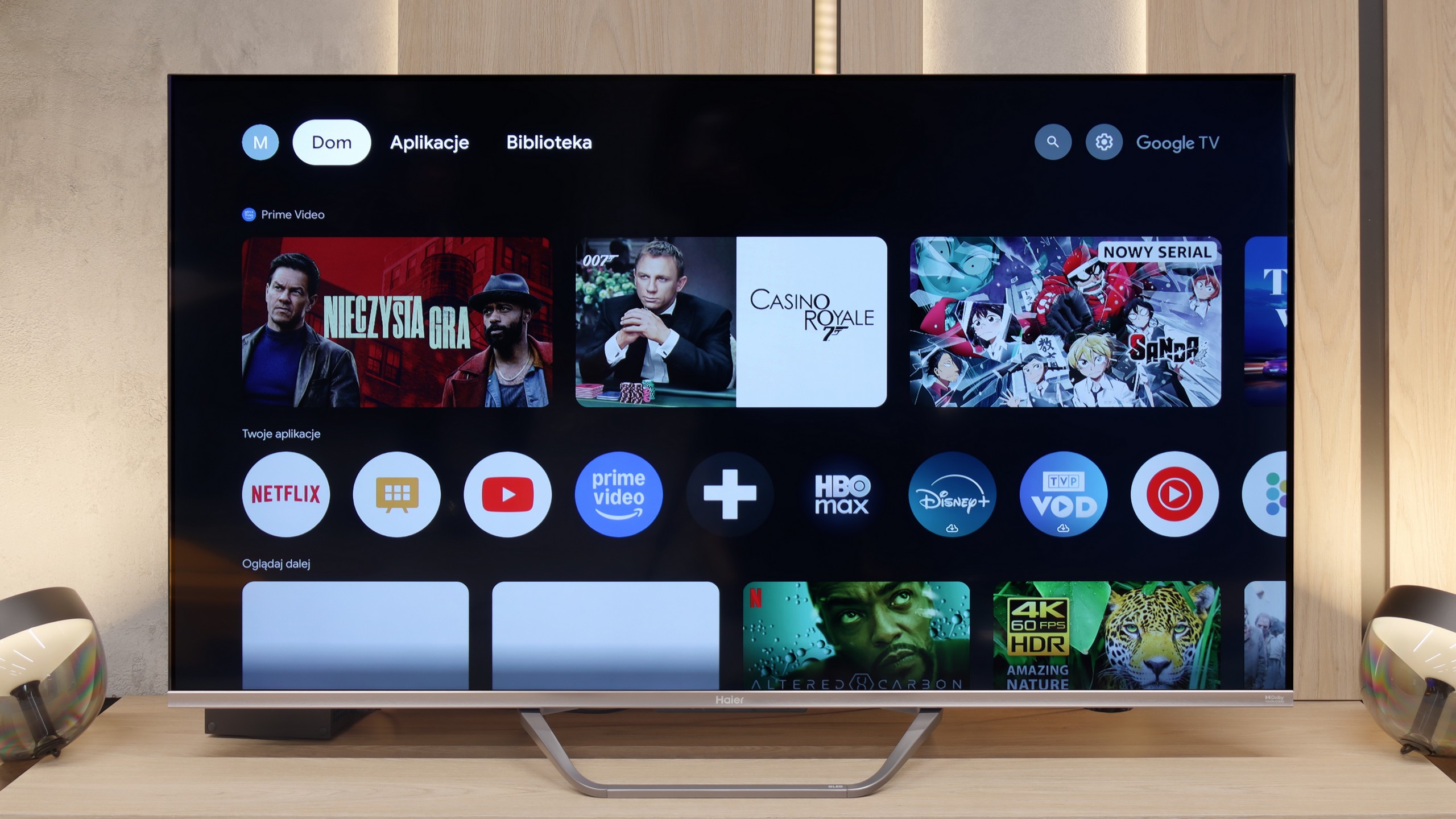
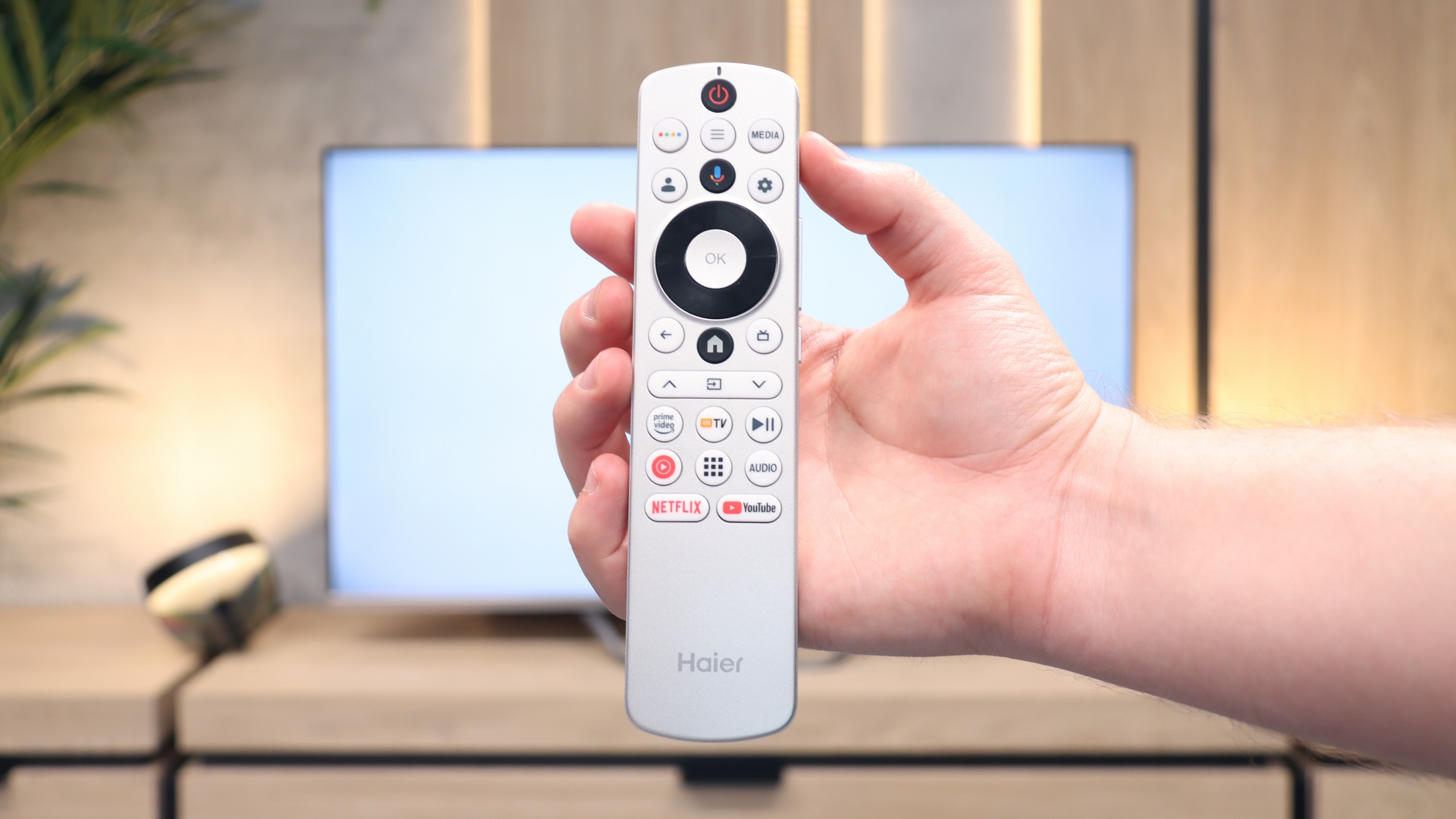

Samsung U8092F – like all this year's models from this brand – runs on the Tizen operating system. The system itself is really well developed: we have access to many applications (though not all), a well-developed smart home support, and various add-ons, including exclusive Samsung apps. There are also features like AirPlay or Chromecast, which make it easy to connect a phone to the TV and transfer multimedia.
Unfortunately, since this is Samsung's cheapest series in 2025, the manufacturer did not decide to include a solar remote. In the package, we find a classic infrared remote, which visually resembles a newer version, but unfortunately lacks voice functions. As for typically "TV" features – it lacks recording functions and PiP (picture-in-picture) mode. On the plus side, however, HDMI eARC works well, allowing you to easily control devices from the set such as a decoder or soundbar – and it really works seamlessly.
SmartTV on Haier Q80FUX: GoogleTV
First, let's tackle the smart layer, which is managed by the Google TV system on the Q80FUX. This is theoretically a huge advantage, opening access to an endless library of applications, facilitating screen mirroring from mobile devices, and offering convenient voice search. Unfortunately, just like in other models from this brand that we've tested, the implementation of this platform leaves much to be desired. It’s not even about drastic freezes or delays in navigation, but rather a festival of minor errors, oversights, and terrible translations in the menu. It’s hard to regard "Google TV" in Haier’s version as comparable to what we know, for instance, from Sony or TCL receivers, even though the same proudly sounding name appears on the box.
Classic Features
Moving on to the classic, practical functions of the television, the picture does not improve at all. The only commendable aspect is the presence of Bluetooth connectivity and an unusual yet useful relic from the past in the form of an analog headphone output jack. Other than that, it’s hard to find anything that would excite us. Due to problematic software, the receiver (just like its predecessors in our tests) was unable to find any terrestrial TV channels, while other TVs connected to the same installation had no issues whatsoever. The remote control itself is also strange – its design might appeal to some, but due to the lack of a numeric keypad and the absurd placement of some buttons on the side edge, it definitely cannot be called senior-friendly.
Playing files from USB
9.3/10
9.6/10
Supported photo formats:
Maximum photo resolution:
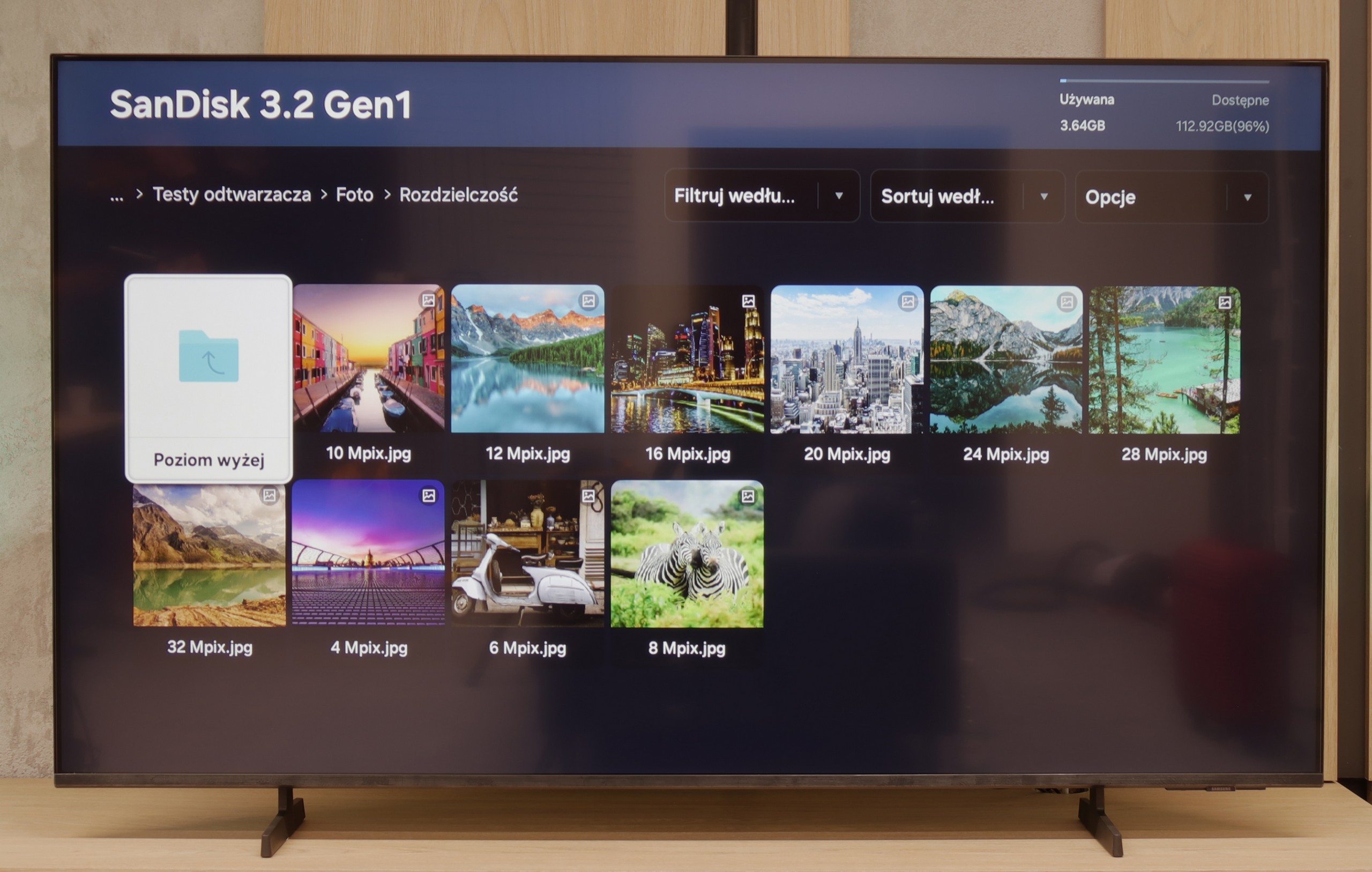
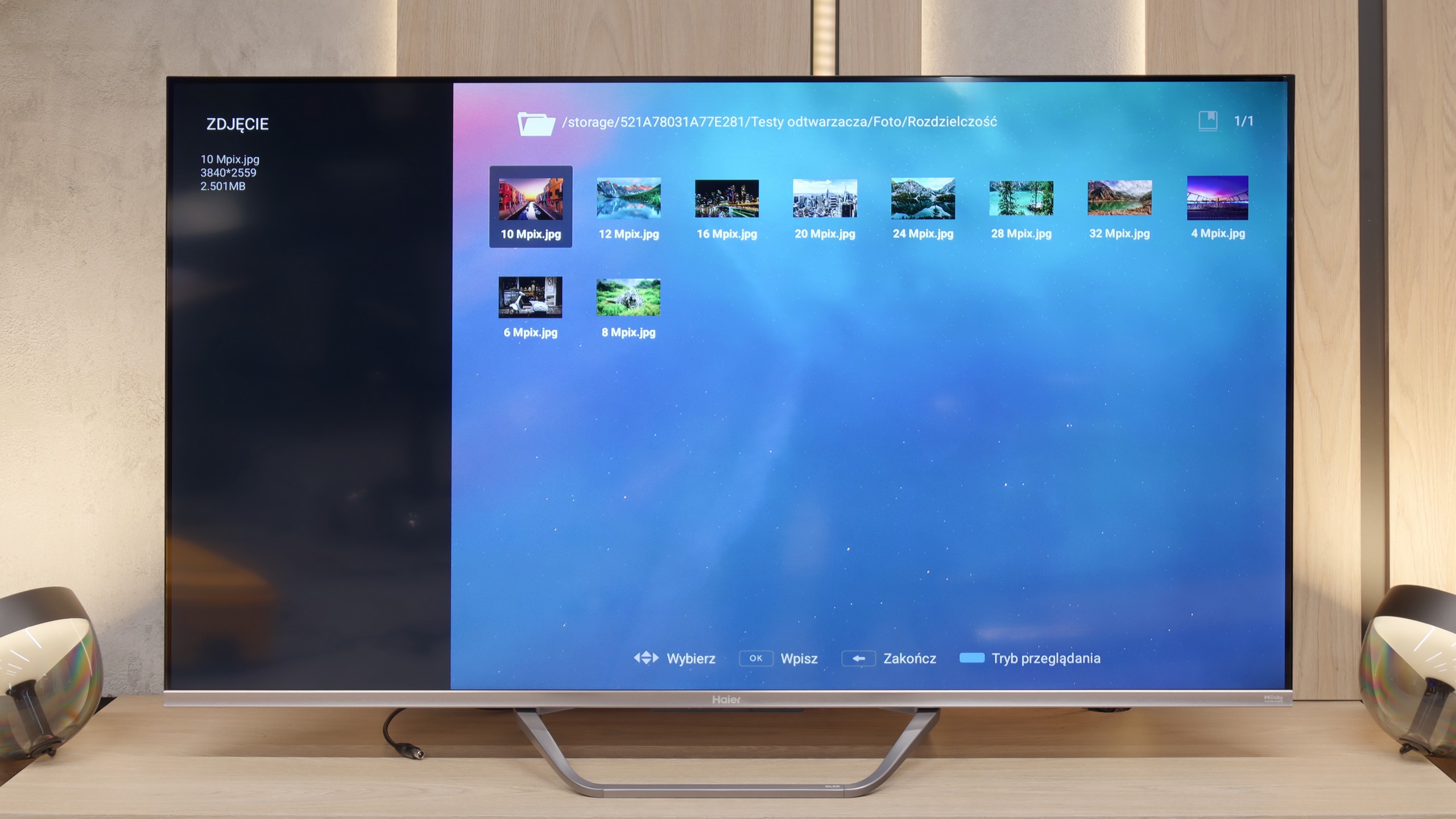
Samsung U8092F handles playback of files rather smoothly – the television supports most popular audio and video formats. Of course, it does not support Dolby Vision, but we simply will not find that in any Samsung model.
There may be some reservations regarding the support for external text files – those that the user would like to add as subtitles to a movie. During our tests, the television only played TXT files, and other formats, such as SRT or SUB, unfortunately did not work. This may not be a problem for everyone, but it's worth knowing. Perhaps this is an issue to be improved in the future with an update to the television's operating system.
We must admit that after a series of setbacks we encountered when assessing the overall implementation of the Google TV system, we approached the multimedia player test with considerable caution. Meanwhile, in this one specific aspect, the Q80FUX served us a real surprise. The built-in application for handling files from USB drives works just great. This software component seems to be completely immune to the issues afflicting the rest of the system, opening virtually all the most important and popular video file formats we presented to it.
Apps
8.7/10
9.6/10














































Sound
5.7/10
5.5/10
- Maximum volume-84dB
- Dolby Digital Plus 7.1
- Dolby True HD 7.1
- Dolby Atmos in Dolby Digital Plus (JOC)
- Dolby Atmos in Dolby True HD
- DTS:X in DTS-HD MA
- DTS-HD Master Audio
U8092F doesn't pretend to have a home theater onboard. We get a standard set of 2 x 10 W, which sounds decent, but without much excitement, though with a slight bass. For everyday viewing, this audio setup is completely sufficient. We were pleasantly surprised that it was able to play a movie with the built-in Dolby Atmos codec (JOC) – although, of course, we're not talking about true surround sound here.
Turning to the issue of acoustic "experiences," the Haier Q80FUX seems to adhere to the principle that sound should simply be. And it is – that’s about all that can be said about it. The built-in speakers produce sound that is exceedingly flat, lacking character, and most importantly, they lack any clear bass foundation. One comfort is the fact that the TV supports Dolby Atmos format. But let’s be honest: to truly take advantage of the benefits of this codec and hear the promised space, passive decoding capability is not enough. Connecting an external home theater system or at least a decent soundbar is, in this case, not just a recommendation but an absolute necessity.
Sound Quality Test
No sound test video
Acoustic Measurements
No acoustic data
84dBC (Max)
75dBC
